Cuba is an island located in the Caribbean Sea known for its rich biodiversity and unique bird species. It is a popular destination for birders from around the world to observe and study some of the most interesting and colorful birds that can be found in the Caribbean.
From the endemic Cuban Tody to the endangered Cuban Parrot, Cuba is home to a wide variety of birds that can be seen in its many national parks, forests, and wetlands. This article will explore some of the most interesting and spectacular species of birds that can be found in Cuba.
1. Bee Hummingbird
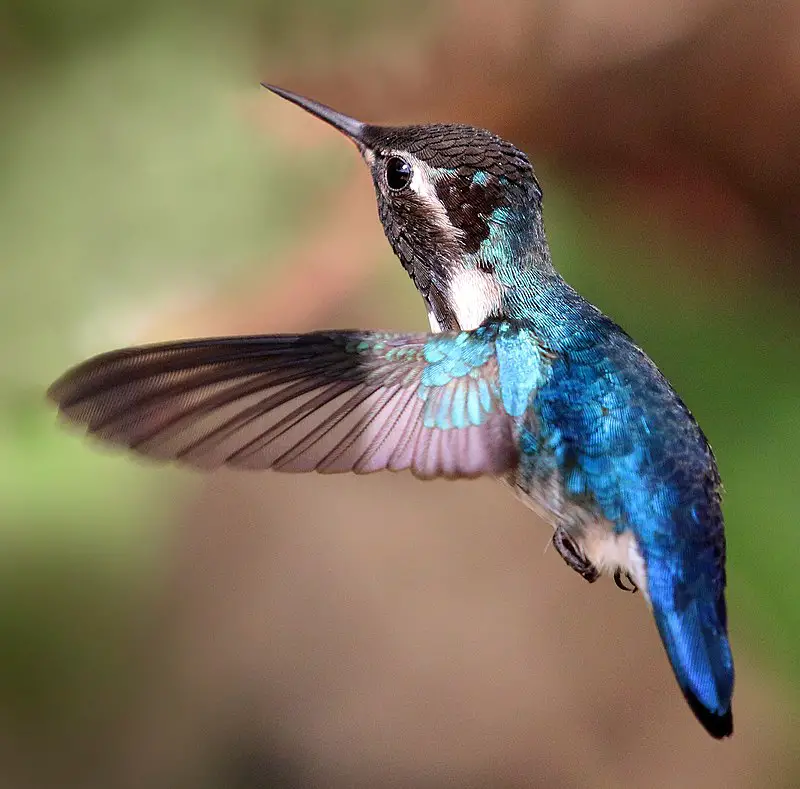
The Bee Hummingbird, also known as the Zunzuncito or Helena hummingbird is a species native to Cuba. As the world’s smallest bird, it amazes with its miniscule size – females weigh only 2.6 grams and are 6.1 cm in length.
Even males are tiny at 1.95 grams and 5 cm long on average. These birds feed mainly on nectar from flowers, but occasionally eat insects for protein too.
They have an impressive ability to hover midair while collecting food from blossoms around them, hence their name “humming” bird due to the sound of wings flapping rapidly when hovering about 80 times per second.
It may be small but this little creature certainly packs power into those tiny wings.Scientific classification:
| Kingdom | Animalia |
| Phylum | Chordata |
| Class | Aves |
| Order | Apodiformes |
| Family | Trochilidae |
| Genus | Mellisuga |
| Species | M. helenae |
2. Cuban Tody
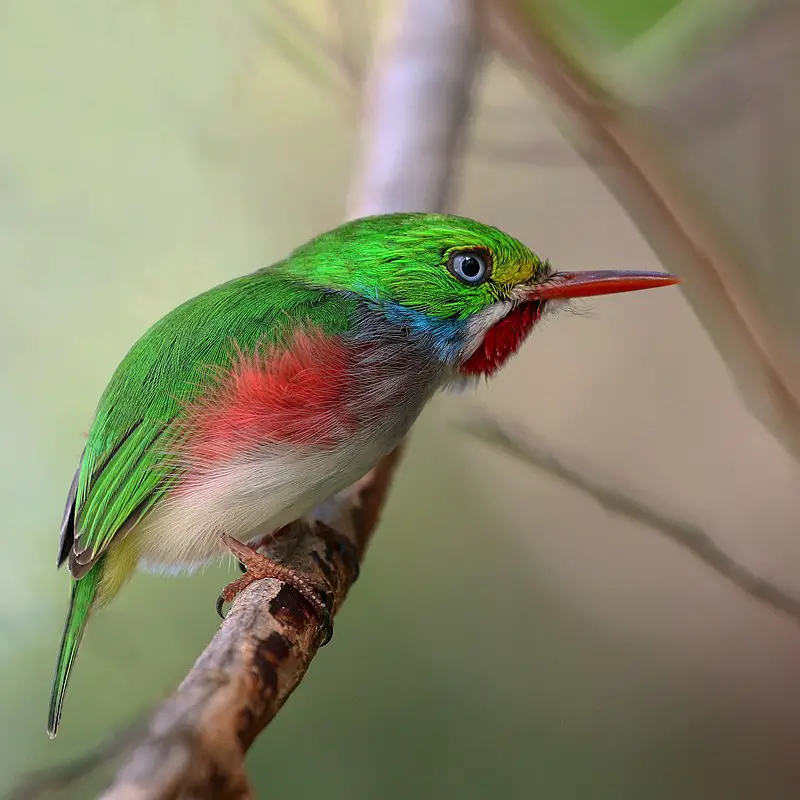
The Cuban tody is a vibrant, small bird found in Cuba and its adjacent islands. It measures 11cm (4.3 inches) long with a large head and thin flat bill.
Its coloration includes an iridescent green back, pale blue chin and throat, white underbelly, orange-red lower breast patch and yellow upper breast spot which make it stand out amongst other birds of the same species.
They feed mainly on insects but will also eat lizards or frogs occasionally too. These active little birds can often be seen perched atop tree branches scanning their surroundings for food sources before quickly swooping down to catch them mid air.Scientific classification:
| Kingdom | Animalia |
| Phylum | Chordata |
| Class | Aves |
| Order | Coraciiformes |
| Family | Todidae |
| Genus | Todus |
| Species | T. multicolor |
3. Cuban Trogon
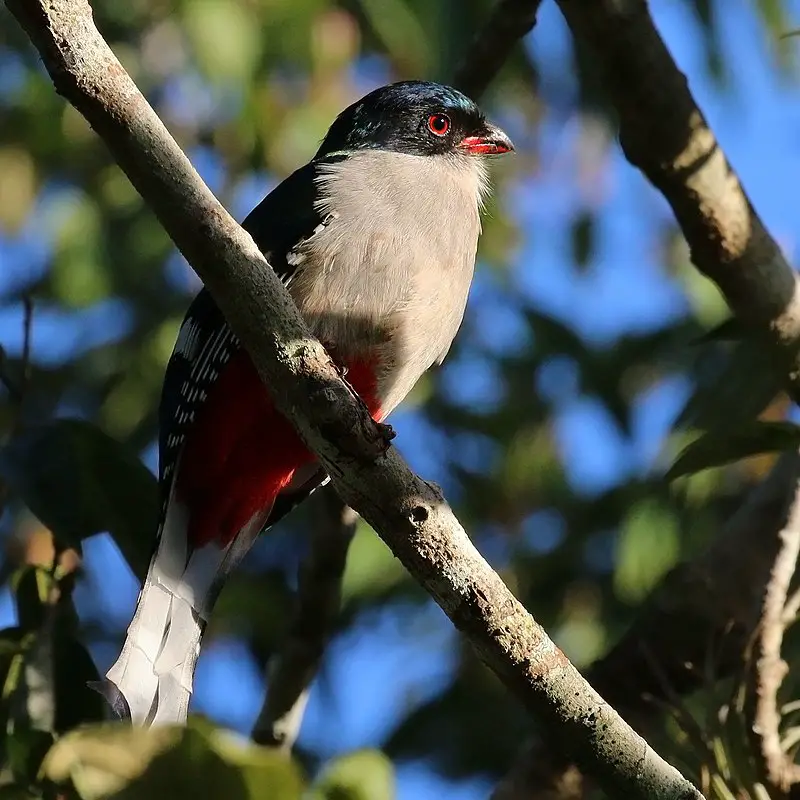
The Cuban Trogon is a species of bird belonging to the family Trogonidae. Endemic to Cuba, it serves as the national bird and has two subspecies: P. t. temnurus and P. t. vescus.
The Cuban Trogon stands out due to its beautiful plumage; they have an overall green body with yellow underparts, blue wings that are tipped in white, a red forehead and throat patch along with blackish gray feathers on their back marking them distinctively from other birds around them.
They inhabit humid forests located near rivers or swamps where they feed mainly on insects such as beetles & butterflies supplemented by some fruit & nectar intake too.
Their loud call can be heard during dusk especially when searching for mates or establishing territories – making sure that everyone knows these gorgeous birds live here.Scientific classification:
| Kingdom | Animalia |
| Phylum | Chordata |
| Class | Aves |
| Order | Trogoniformes |
| Family | Trogonidae |
| Genus | Priotelus |
| Species | P. temnurus |
Also Featured In: Common Latin America Birds,
4. Cuban Parakeet
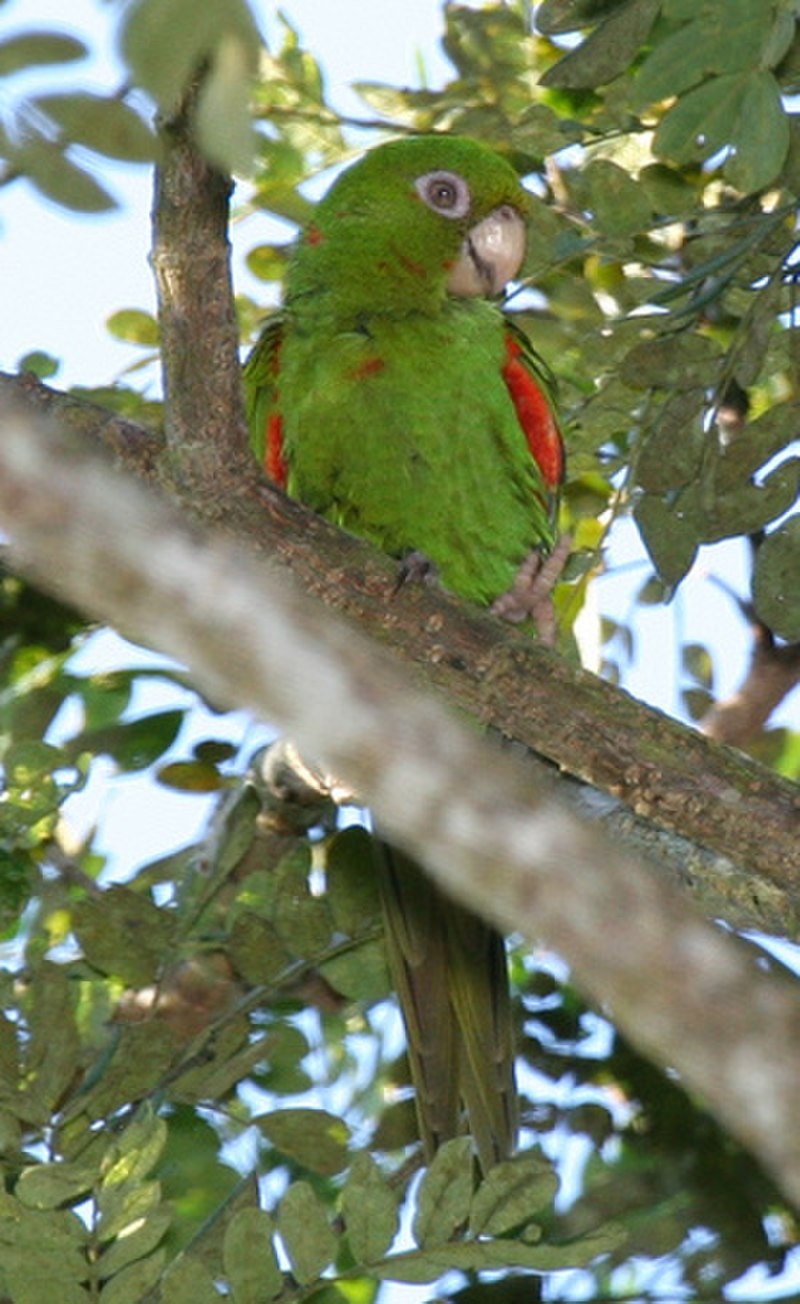
The Cuban parakeet is a species of parrot native to the island of Cuba. It has been extirpated from Isla de la Juventud and can be found in dry forests, savannas, and arable land.
Breeding seasonally between April-July, they build their nests either in tree holes or termite mounds. These birds have bright green feathers with yellow on its head while females feature red around the eyes and greyish bands over its wings.
They feed mainly on fruits such as figs but also eat flowers, buds and seeds when available. As an endangered species due to loss of habitat caused by deforestation, it’s important that we take steps to protect this beautiful bird before it’s too late.Scientific classification:
| Kingdom | Animalia |
| Phylum | Chordata |
| Class | Aves |
| Order | Psittaciformes |
| Family | Psittacidae |
| Genus | Psittacara |
| Species | P. euops |
5. Cuban Black Hawk
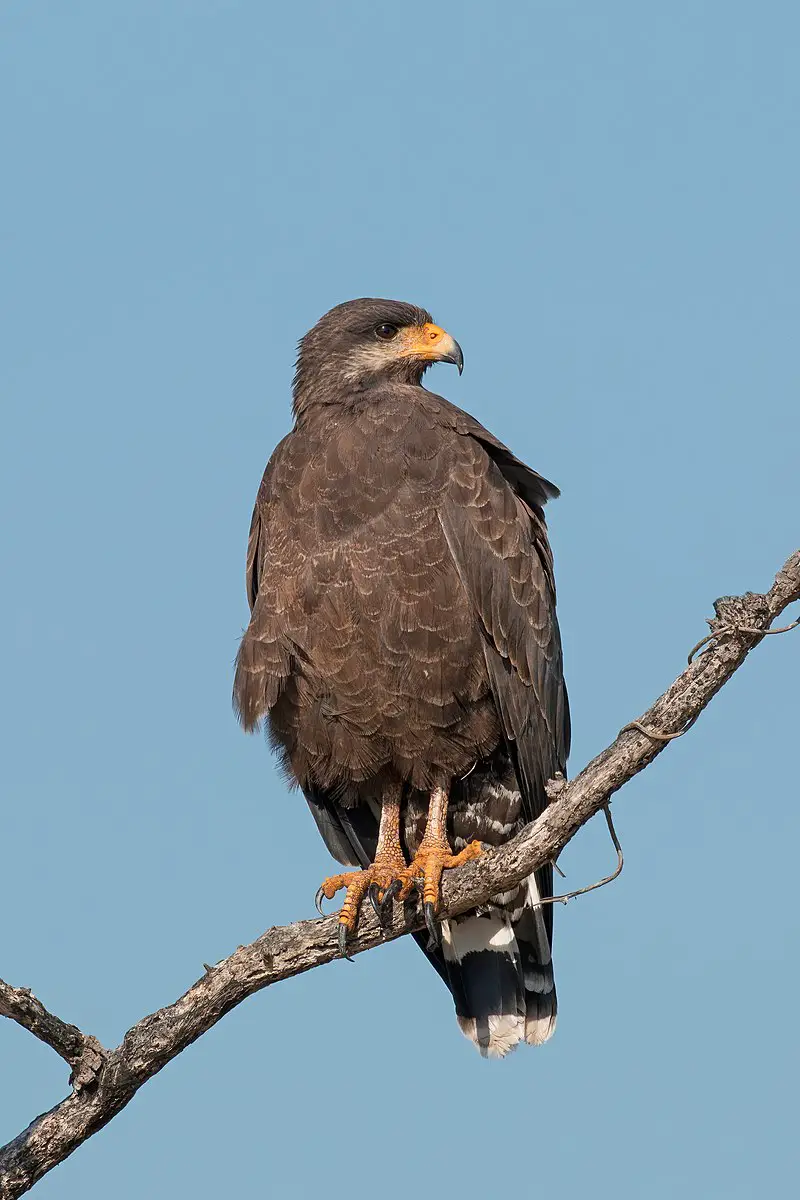
The Cuban Black Hawk is a species of bird in the Accipitridae family, endemic to Cuba and its surrounding cays.
It was first described by German ornithologist Jean Cabanis in 1855, who initially considered it a subspecies of the Mangrove Black Hawk (Buteogallus anthracinus).
However, since 2007 there have been studies that suggest that due to differences in behavior from other Buteogallus black hawks, it should be treated as a distinct species.
The Cuban Black Hawk has an impressive wingspan of 4 feet 6 inches and can hunt for small mammals on land or fish off cliffs near shorelines.
They are predominately dark brown with white spots along their undersides and also feature unique red eyes – making them truly magnificent birds.Scientific classification:
| Kingdom | Animalia |
| Phylum | Chordata |
| Class | Aves |
| Order | Accipitriformes |
| Family | Accipitridae |
| Genus | Buteogallus |
| Species | B. gundlachii |
6. Trogon
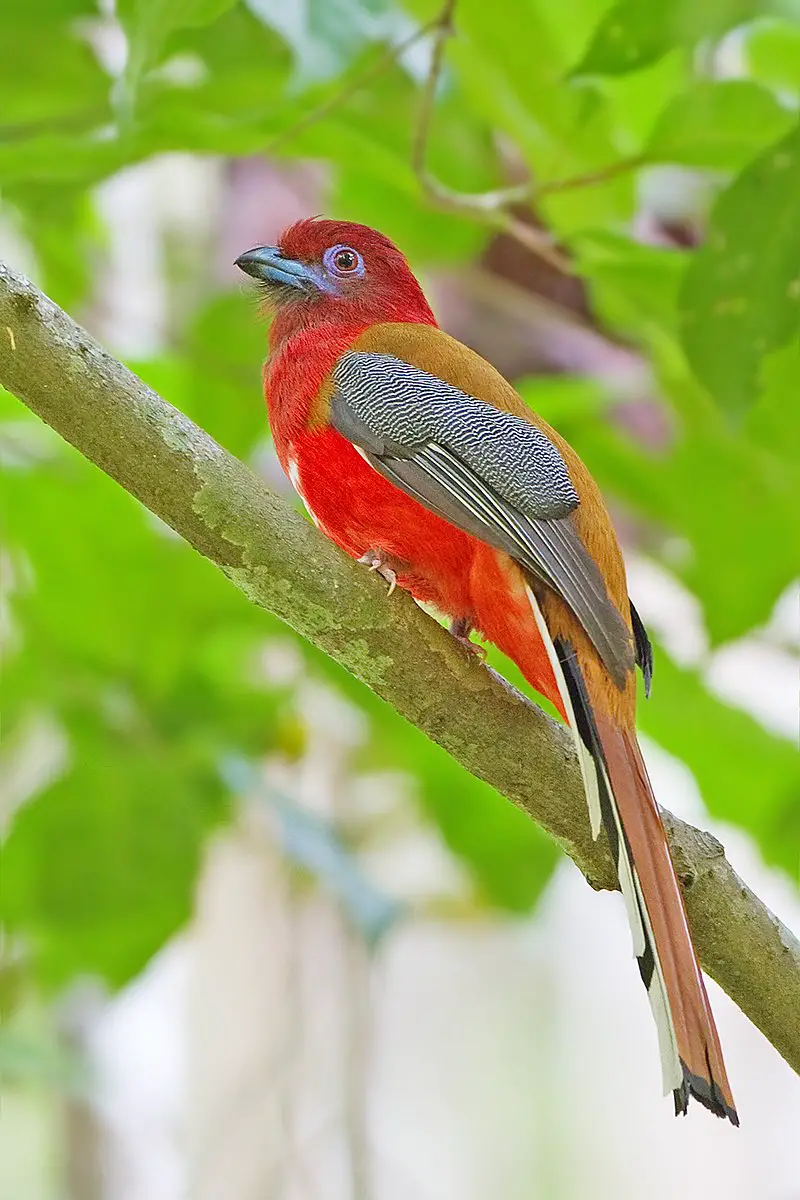
Trogons are a unique bird species that can be found all over the world. They belong to the order Trogoniformes and have only one family, called Trogonidae, which consists of 46 species in seven genera.
Fossil records show that trogons existed 49 million years ago during the Early Eocene period. It is believed they may be closely related or form part of two other orders: Coraciiformes and Passerines.
These birds typically have brightly colored feathers with some having iridescent colors on their wings and tails as well as red bellies and breasts.
Their diet mainly consists of fruit, insects, lizards and frogs but larger ones will also feed on small mammals such as mice or bats.
The most famous member from this group is Quetzalcoatlus – an extinct giant pterosaur which lived approximately 70-65 million years agoScientific classification:
| Kingdom | Animalia |
| Phylum | Chordata |
| Class | Aves |
| Clade | Cavitaves |
| Clade | Eucavitaves |
| Order | Trogoniformes AOU, 1886 |
| Family | Trogonidae Lesson, 1828 |
7. Cuban Pygmy Owl
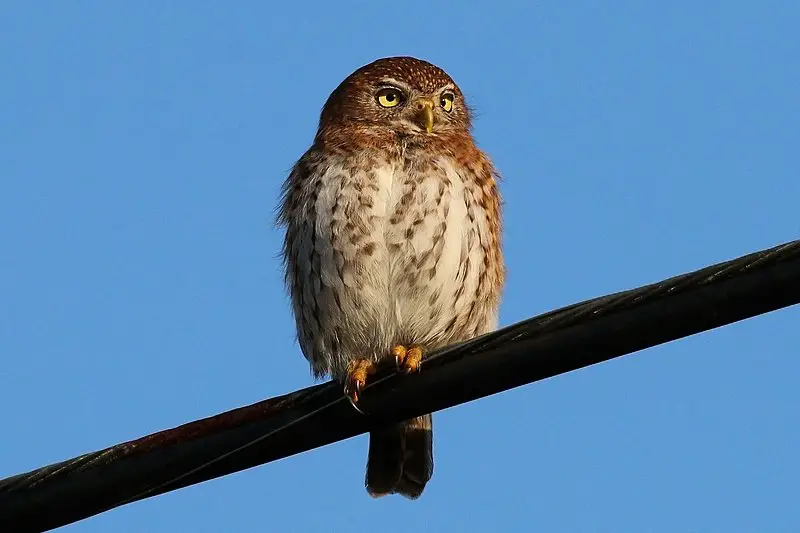
The Cuban pygmy owl (Glaucidium siju) is a species of owl that is endemic to Cuba. It has three subspecies and measures 16-17 cm in length, with males weighing 47-68 g and females 66-102 g.
They have two color morphs: grayish brown or reddish brown upperparts, white underparts streaked with dark markings on the breast, crown, nape and back of head.
The eyes are yellow outlined by black facial discs which are bordered above by white spots giving it a distinct look.
These owls feed mostly on small birds as well as invertebrates such as insects, spiders and centipedes among others.
They perch motionless for long periods waiting for prey before swooping down swiftly to catch them unawares.Scientific classification:
| Kingdom | Animalia |
| Phylum | Chordata |
| Class | Aves |
| Order | Strigiformes |
| Family | Strigidae |
| Genus | Glaucidium |
| Species | G. siju |
8. Tody
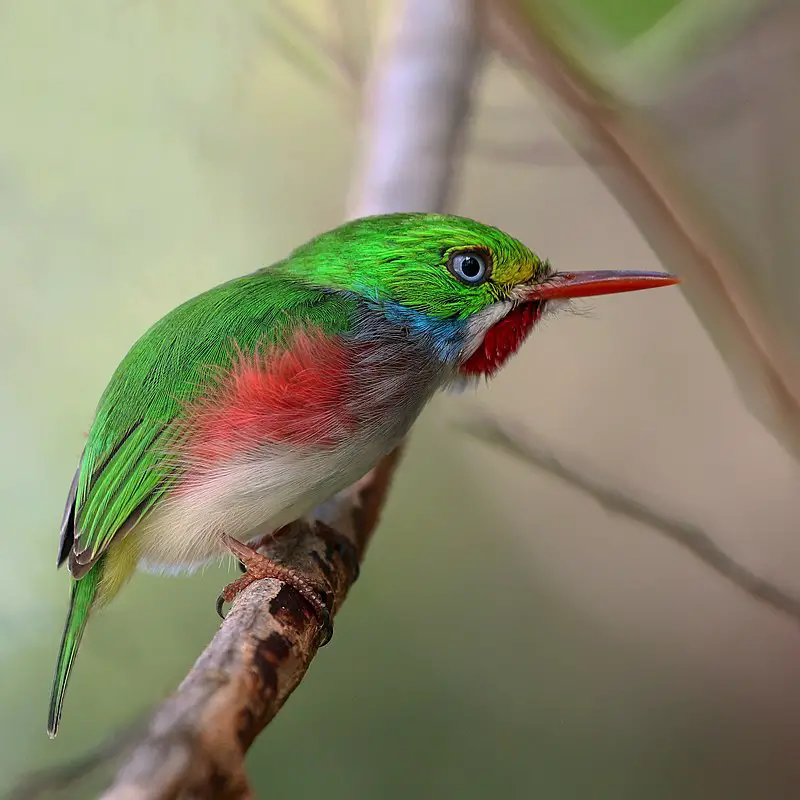
Tody birds are small yet stunningly beautiful Caribbean birds that belong to the Coraciiformes order, which also includes kingfishers, bee-eaters and rollers.
They make up the family Todidae with one living genus – Todus – and a fossilized genus called Palaeotodus.
The first classification of these birds was done by Mathurin Jacques Brisson in 1760 who placed them in their own distinct genus; they were originally part of Alcedo (the kingfisher).
These tiny beauties have bright green bodies with white bellies, black heads capped with red or orange feathers depending on species, short tails and yellow legs.
They live mainly in forests but will sometimes venture out into open meadows where they can be seen hunting insects like most other hummingbirds do.Scientific classification:
| Kingdom | Animalia |
| Phylum | Chordata |
| Class | Aves |
| Order | Coraciiformes |
| Family | Todidae Vigors, 1825 |
Also Featured In: Birds that You’ll Find in Puerto Rico, Caribbean Birds
9. Yellow-Headed Warbler
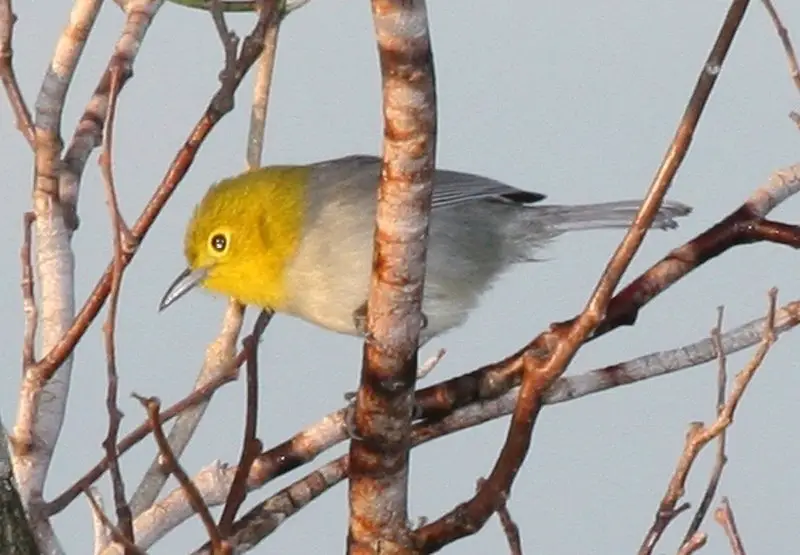
The Yellow-headed Warbler is a beautiful bird native to western Cuba. It has bright yellow feathers on its head, back and throat with darker olive green wings and tail.
The male’s chest area is also slightly brighter than the female’s. This species belongs to the Cuban warbler family Teretistridae, along with Oriente Warbler which was originally placed in New World warblers (Parulidae).
Phylogenetic studies of mitochondrial DNA have revealed that it should be classified differently from other birds of this type. These amazing creatures mostly feed on insects but can occasionally consume small fruits as well.
They are known for their loud singing during breeding season as they search for mates among trees or shrubs at forest edges or open areas near water sources like rivers or streamsScientific classification:
| Kingdom | Animalia |
| Phylum | Chordata |
| Class | Aves |
| Order | Passeriformes |
| Family | Teretistridae |
| Genus | Teretistris |
| Species | T. fernandinae |
10. Blue-Headed Quail-Dove
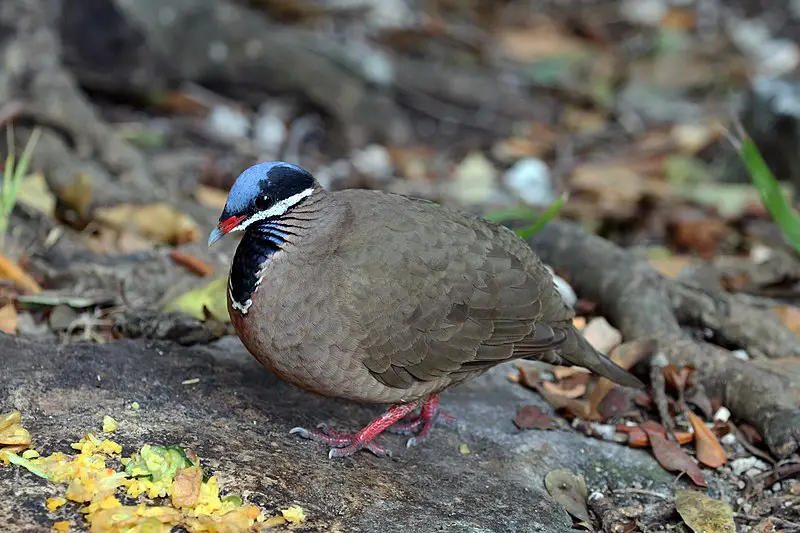
The Blue-headed Quail-dove is a species of bird in the Columbidae family, and is the only one within its subfamily Starnoenadinae and genus Starnoenas.
The English naturalist Eleazar Albin first described it back in 1734 with an accompanying drawing.
This beautiful bird has predominantly blue plumage on its head, neck and chest along with dark brown wings that are tipped white spotting their sides.
It also features red eyes alongside small black beaks typical to pigeons/doves as well as long legs for easy locomotion over land or through grassy areas.
Although they can fly short distances if necessary, this quail dove prefers to stay closer to ground level where it finds food such as seeds from grasses or weeds amongst other things.Scientific classification:
| Kingdom | Animalia |
| Phylum | Chordata |
| Class | Aves |
| Order | Columbiformes |
| Family | Columbidae |
| Genus | Starnoenas Bonaparte, 1838 |
| Species | S. cyanocephala |
11. Fernandina’s Flicker
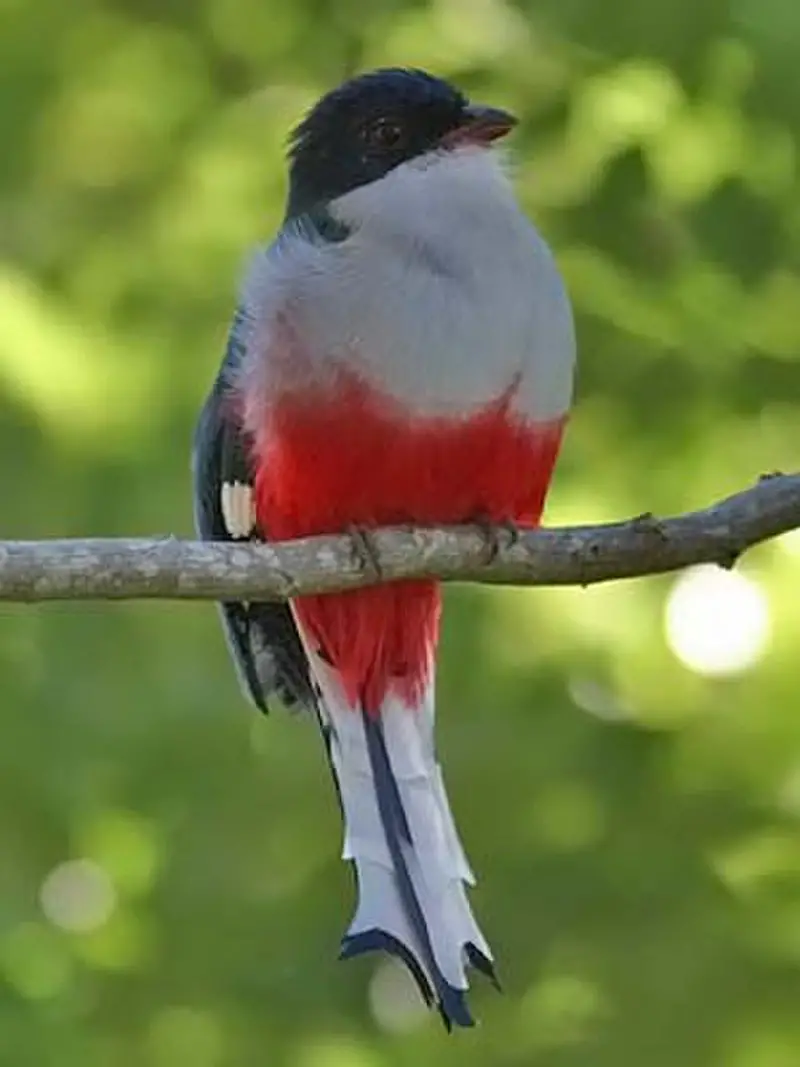
Fernandina’s Flicker (Colaptes fernandinae) is a species of woodpecker indigenous to the Galapagos Islands. It has an orange-brown back, reddish head and wings with a yellow breast.
This bird can also be identified by its long tail feathers which are twice as long as other similar birds in the region.
They feed on insects such as ants, beetles and caterpillars that live under tree bark or inside decaying logs; they also eat fruit from cacti and shrubs found near their nesting sites.
The Fernandina’s flicker nests in hollow trees or cavities made by other birds like parrots, making them vulnerable to predation from introduced predators like cats and rats.
To survive this danger these birds have adapted their behaviour so that they move around during daylight hours instead of at night when it’s safer for them to do so.
12. Cuban Gnatcatcher
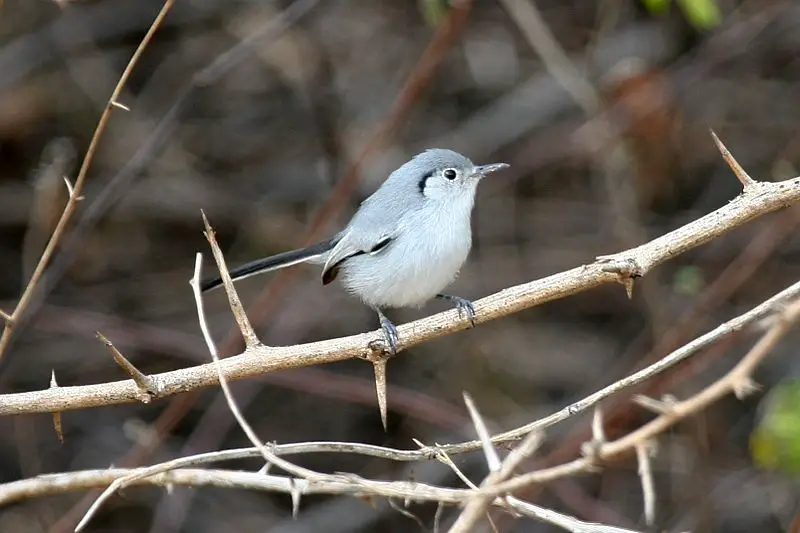
The Cuban Gnatcatcher is a small bird found exclusively in Cuba. It has an average size of 10 to 11 cm and belongs to the family Polioptilidae, also known as gnatcatchers.
This species was originally described by famous ornithologist Johannes Gundlach who named it in honour of Juan Lembeye.
The Cuban Gnatcatcher is monotypic, meaning there are no subspecies or variations within this species.
This attractive little bird can usually be seen foraging among trees and bushes near water sources such as streams and ponds.
They feed mainly on insects but may occasionally eat berries too. Their diet consists mostly of ants, beetles, bees and spiders which they catch with their long sharp bill .
Breeding season starts from March onwards when pairs form monogamous bonds that last throughout the year before separating again once breeding ends around June-July time period.Scientific classification:
| Kingdom | Animalia |
| Phylum | Chordata |
| Class | Aves |
| Order | Passeriformes |
| Family | Polioptilidae |
| Genus | Polioptila |
| Species | P. lembeyei |
13. Cuban Bullfinch
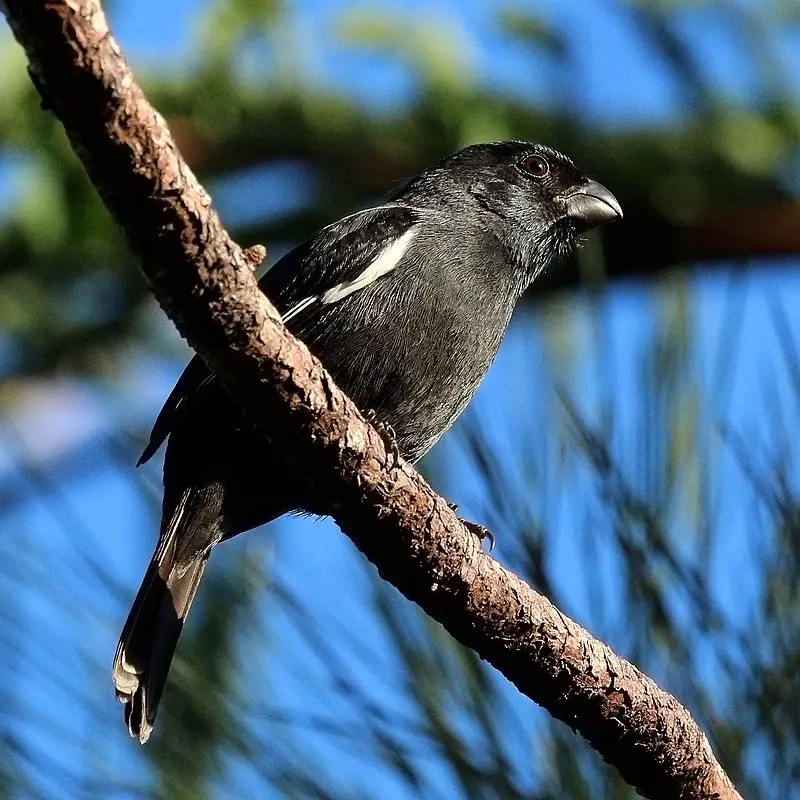
The Cuban bullfinch is a songbird species endemic to Cuba. It belongs to the tanager family Thraupidae and subfamily Coerebinae, which also includes Darwin’s finches.
This beautiful bird can be found in subtropical or tropical moist lowland forests, montane forests and heavily degraded former forest areas. Its plumage is mainly deep black with yellowish-green wings and white spots on its back.
The Cuban Bullfinch has an omnivorous diet consisting of fruits, grains, insects and occasional small vertebrates such as frogs or lizards.
They generally live alone but can form flocks when searching for food sources during breeding season they will join other birds forming loose colonies near rivers or swamps where nesting takes place often building nests on tree branches close together with their neighbours providing protection against predators like hawks cats snakes etcetera .
To conclude this wonderful bird is undoubtedly worth protecting given its uniqueness within the Caribbean IslandsScientific classification:
| Kingdom | Animalia |
| Phylum | Chordata |
| Class | Aves |
| Order | Passeriformes |
| Family | Thraupidae |
| Genus | Melopyrrha |
| Species | M. nigra |
Also Featured In: Beautiful Birds Found in Grand Cayman,
14. Oriente Warbler
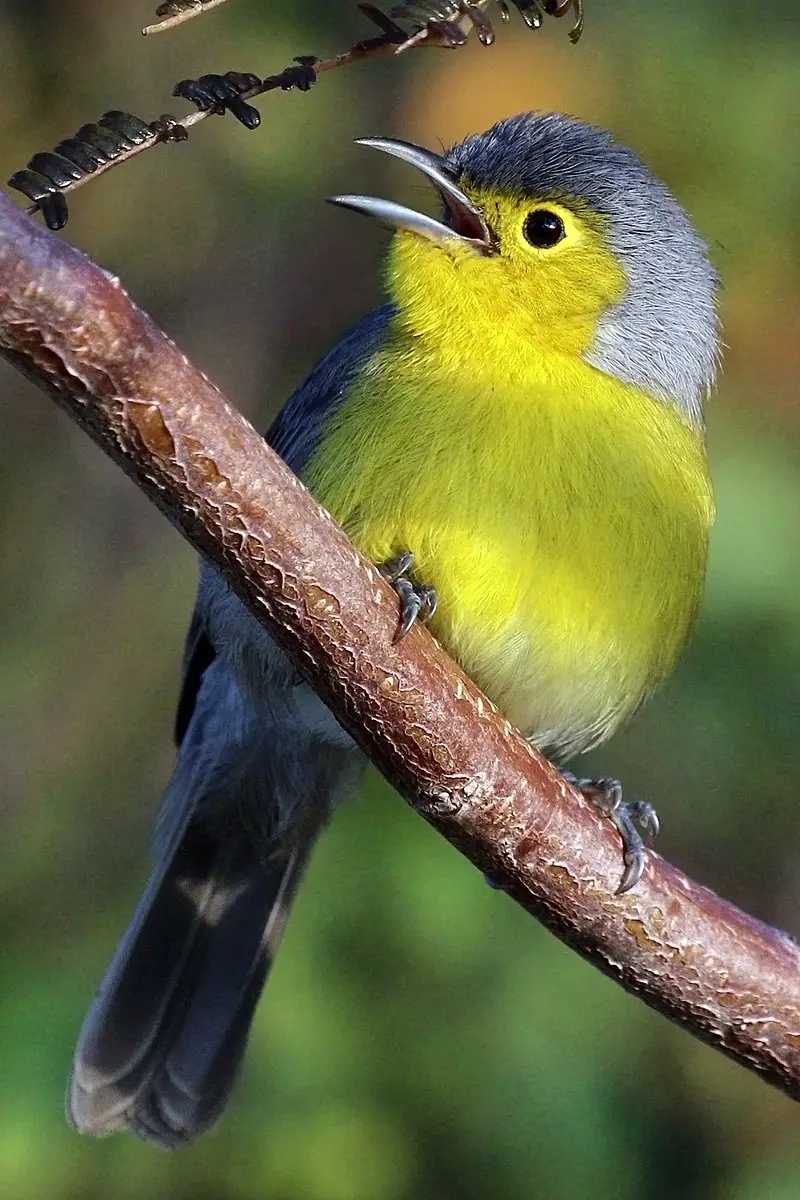
The Oriente warbler is a species of bird endemic to central and eastern Cuba. It belongs to the family Teretistridae, which also includes its close relative, the yellow-headed warbler.
Both species were originally placed in the New World Warblers (Parulidae) group but recent studies revealed that they actually belong in their own unique family.
The Oriente warbler has an olive-green upper body with black stripes on its back and wings while it’s underside is white or pale yellowish color.
Its head features light gray markings around each eye as well as a dark line extending from above its bill down along both sides of its neck toward chest feathers; Males have a brighter plumage than females do during breeding season when compared side by side.
This species prefers open areas such as woodlands and shrubland habitats for nesting purposes where seeds are abundant for feeding upon year round.Scientific classification:
| Kingdom | Animalia |
| Phylum | Chordata |
| Class | Aves |
| Order | Passeriformes |
| Family | Teretistridae |
| Genus | Teretistris |
| Species | T. fornsi |
15. Cuban Grassquit
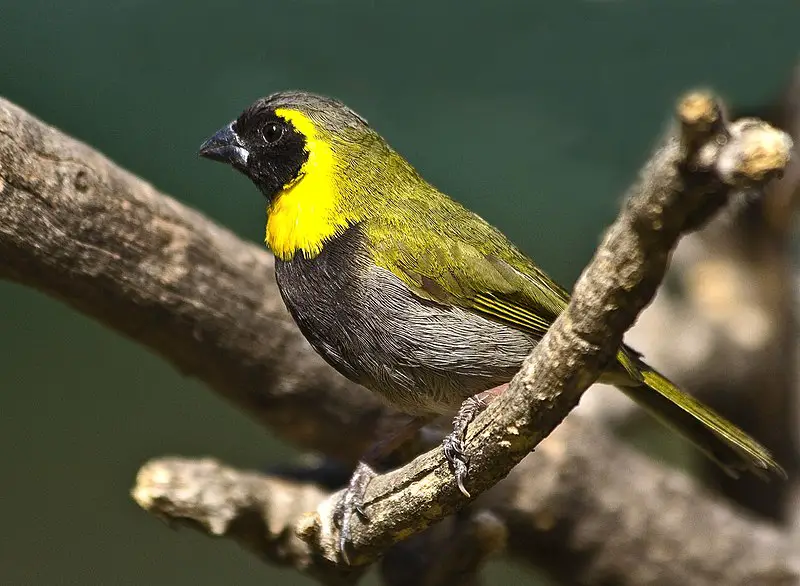
The Cuban grassquit is a small bird found only in Cuba. It belongs to the tanager family Thraupidae and has been described by the German naturalist Johann Friedrich Gm in 1789.
This species can be seen inhabiting subtropical or tropical moist lowland forest, subtropical or tropical moist montane forest, subtropical or tropical dry shrubland as well as heavily degraded former forests.
The cuban grassquit usually feed on seeds from different plants and trees but also eat insects occasionally for protein intake during breeding season when they need more energy than usual.
They prefer to live near water sources like rivers, lakes and ponds because it makes their food look for easier since these areas have lots of vegetation that provides them with all kinds of food throughout the year.Scientific classification:
| Kingdom | Animalia |
| Phylum | Chordata |
| Class | Aves |
| Order | Passeriformes |
| Family | Thraupidae |
| Genus | Phonipara Bonaparte, 1850 |
| Species | P. canora |
16. Cuban Emerald
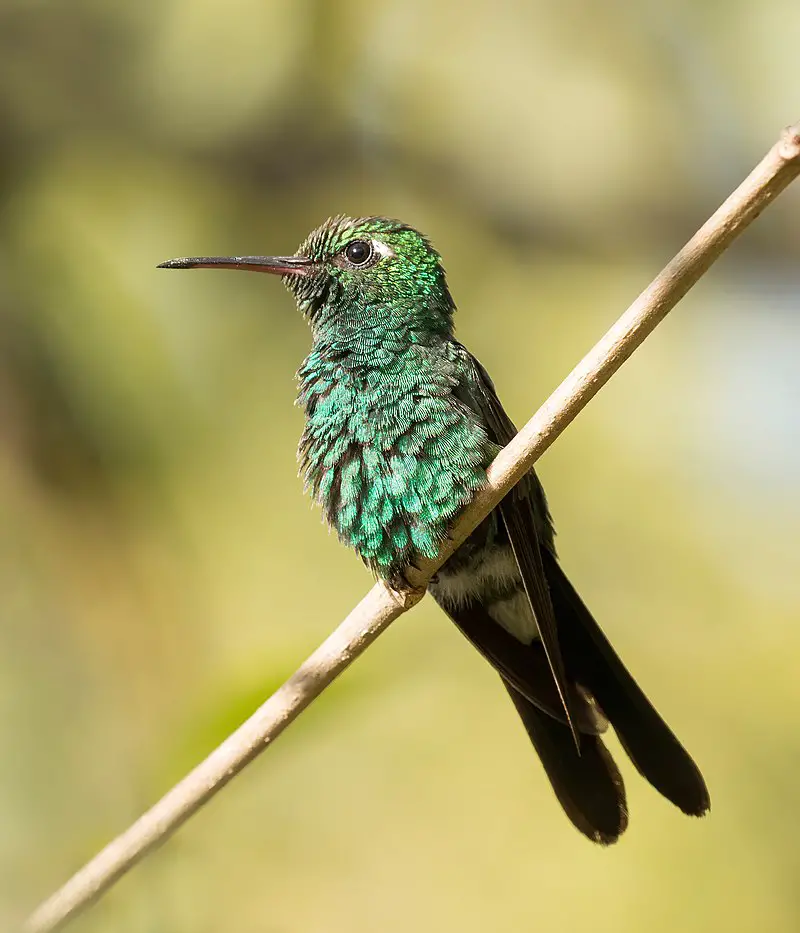
The Cuban Emerald is a species of hummingbird found in the Bahamas and Cuba. It belongs to the Trochilini tribe, which are known as ’emeralds’.
This bird was formerly placed in the genus Chlorostilbon but recent studies have shown that it actually belonged with other emeralds.
The body of this small bird is predominantly green-colored with an iridescent blue throat patch on its chin and some purple or bronze feathers towards its tail end.
Its diet consists mainly of nectar from various flowers, although insects also form part of their daily sustenance.
They use their long curved beaks to reach deep into tubular flowers for nectar, while hovering mid-air like tiny helicopters.
With no natural predators due to their quick maneuverability and powerful wings; these birds can fly up to speeds over 50 km/h.Scientific classification:
| Kingdom | Animalia |
| Phylum | Chordata |
| Class | Aves |
| Order | Apodiformes |
| Family | Trochilidae |
| Genus | Riccordia |
| Species | R. ricordii |
Also Featured In: Green Birds Commonly Found in Florida, Hummingbirds Live around Florida
17. Cuban Vireo

The Cuban vireo is a species of bird found only in Cuba. It inhabits dry forests, lowland moist forests, xeric shrublands and former forest areas that have been heavily degraded.
This unique species was named after the famous Cuban zoologist Juan Gundlach as an honour to him.
The Cuban Vireo has grey-green upperparts with white under parts, while its face has yellowish eye rings and dark line going from its eyes down to the sides of it’s neck.
Its diet mainly consists of insects which are caught by hovering over foliage or gleaning them off branches then catching midair during flight.
Despite having large population numbers this species still remains vulnerable due to deforestation occurring throughout their range; if conservation efforts aren’t taken soon we may lose this amazing creature forever.Scientific classification:
| Kingdom | Animalia |
| Phylum | Chordata |
| Class | Aves |
| Order | Passeriformes |
| Family | Vireonidae |
| Genus | Vireo |
| Species | V. gundlachii |
18. Cuban Solitaire
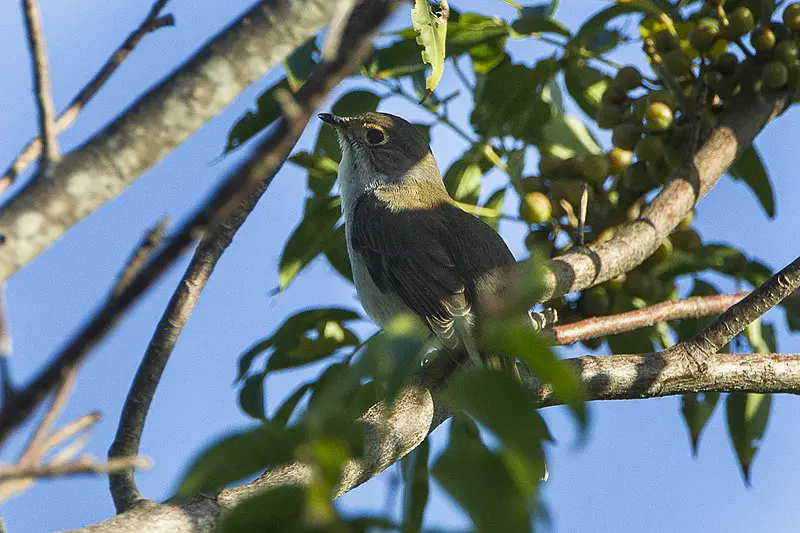
The Cuban solitaire, also known as the Cuban nightingale, is a species of bird found only in Cuba. It lives in moist montane forests and feeds on insects and fruits.
Unfortunately, this unique species is threatened due to loss of its natural habitat. The birds are small but have long tails with white tips which they often flick while singing their beautiful song at dusk or dawn.
They tend to be solitary birds except during breeding season when pairs form monogamous relationships for life.
Conservation efforts must be taken quickly if we want to ensure that future generations can continue enjoying these amazing creatures’ songs for many years to come.Scientific classification:
| Kingdom | Animalia |
| Phylum | Chordata |
| Class | Aves |
| Order | Passeriformes |
| Family | Turdidae |
| Genus | Myadestes |
| Species | M. elisabeth |
19. Cuban Amazon
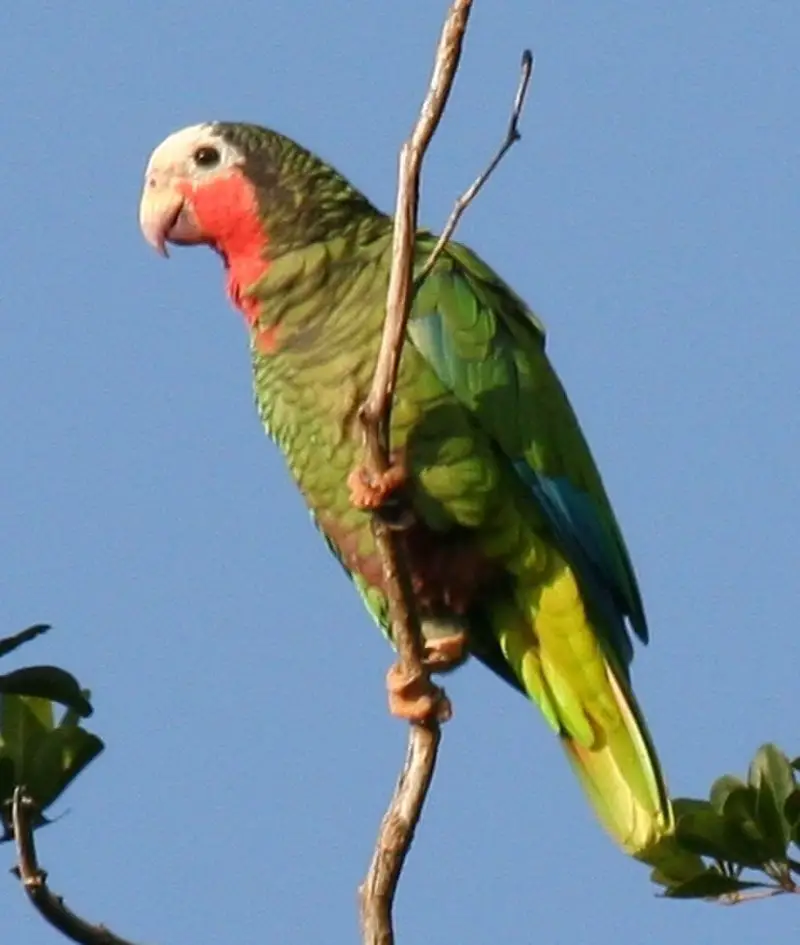
The Cuban amazon is an attractive medium-sized green parrot native to Cuba, the Bahamas and Cayman Islands in the Caribbean.
These birds live mainly in woodlands and dry forests but can also be found as escaped pets in Puerto Rico.
They are easily distinguished by their bright green feathers with white on the tips of their wings, yellow foreheads, red lower mandibles and a hint of rose around their throats.
The Cuban amazon has been known for its colorful beauty since long ago; Columbus himself described them when he first arrived at Cuba.
Unfortunately this species is now endangered due to illegal pet trade so it’s essential that we protect these wonderful birds before they disappear forever from our shores.Scientific classification:
| Kingdom | Animalia |
| Phylum | Chordata |
| Class | Aves |
| Order | Psittaciformes |
| Family | Psittacidae |
| Genus | Amazona |
| Species | A. leucocephala |
20. Grey-Fronted Quail-Dove
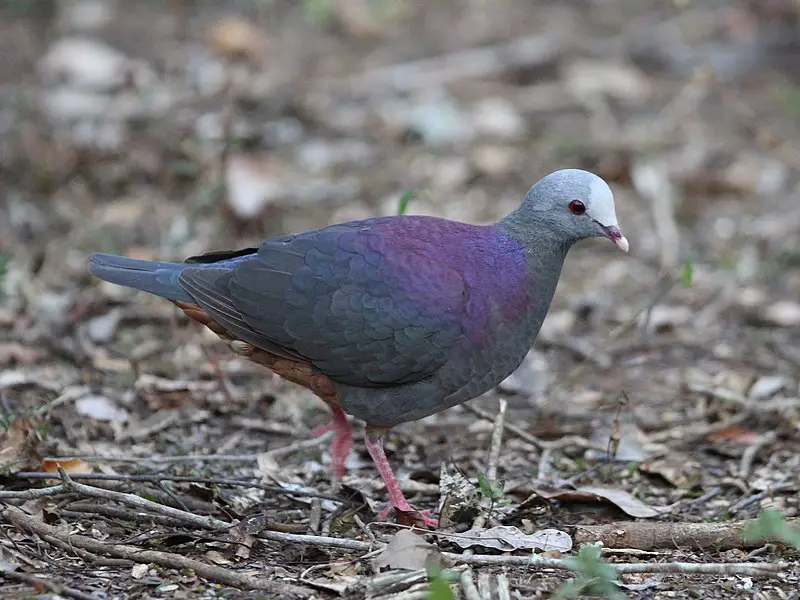
The Grey-fronted Quail-dove is a species of bird from the Columbidae family that can only be found in Cuba.
It was previously part of the Oreopeleia genus, and used to be considered as conspecific with what is now known as White-fronted Quail-Dove under the name “Grey-headed Quail Dove”.
The Grey fronted quail dove has a grey face, neck and mantle contrasted by its chestnut back and wings. Its belly also has white stripes along it’s sides which create an interesting visual effect when seen close up.
These birds feed mainly on seeds, fruits berries or insects so they are not picky eaters.
They tend to live in pairs or small groups near forests and scrublands while nesting on trees making them easy targets for hunters looking for gamebirds in their habitat.
In conclusion, the Gray – fronted quails doves are beautiful yet vulnerable species endemic to CubaScientific classification:
| Kingdom | Animalia |
| Phylum | Chordata |
| Class | Aves |
| Order | Columbiformes |
| Family | Columbidae |
| Genus | Geotrygon |
| Species | G. caniceps |
21. Cuban Blackbird
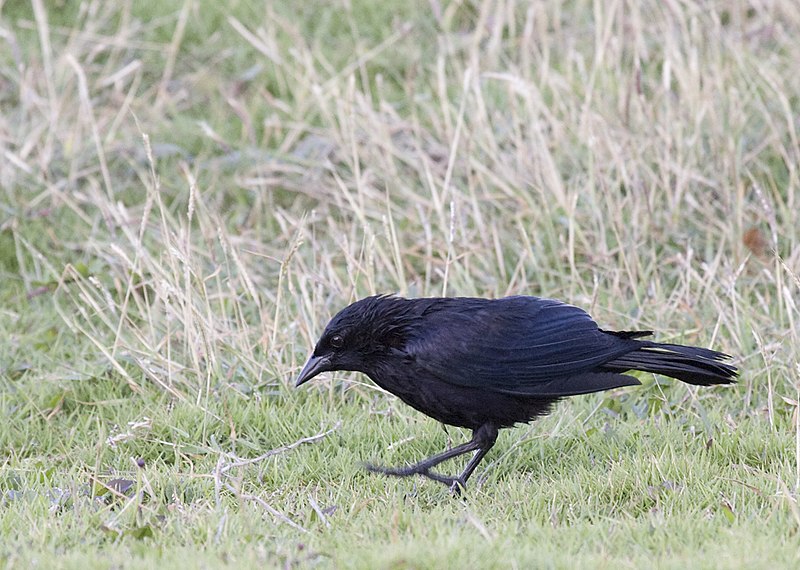
The Cuban blackbird is a species of bird belonging to the family Icteridae. It is characterized by its entirely black plumage with a slight violet sheen on the upperparts and brown eyes, measuring 27 cm in length.
Endemic to Cuba, this species can be found throughout the country and has adapted well to human-modified habitats such as agricultural areas and urban parks.
This adaptability makes them one of Cuba’s most common birds; however their population has been steadily decreasing due to hunting for food or sport, habitat destruction caused by deforestation and mining operations, wetland drainage projects which reduce available feeding grounds, among other threats.
Conservation efforts are needed if we want this beautiful species continue living in their natural home –Cuba.Scientific classification:
| Kingdom | Animalia |
| Phylum | Chordata |
| Class | Aves |
| Order | Passeriformes |
| Family | Icteridae |
| Genus | Ptiloxena |
| Species | P. atroviolaceus |
22. Red-Shouldered Blackbird
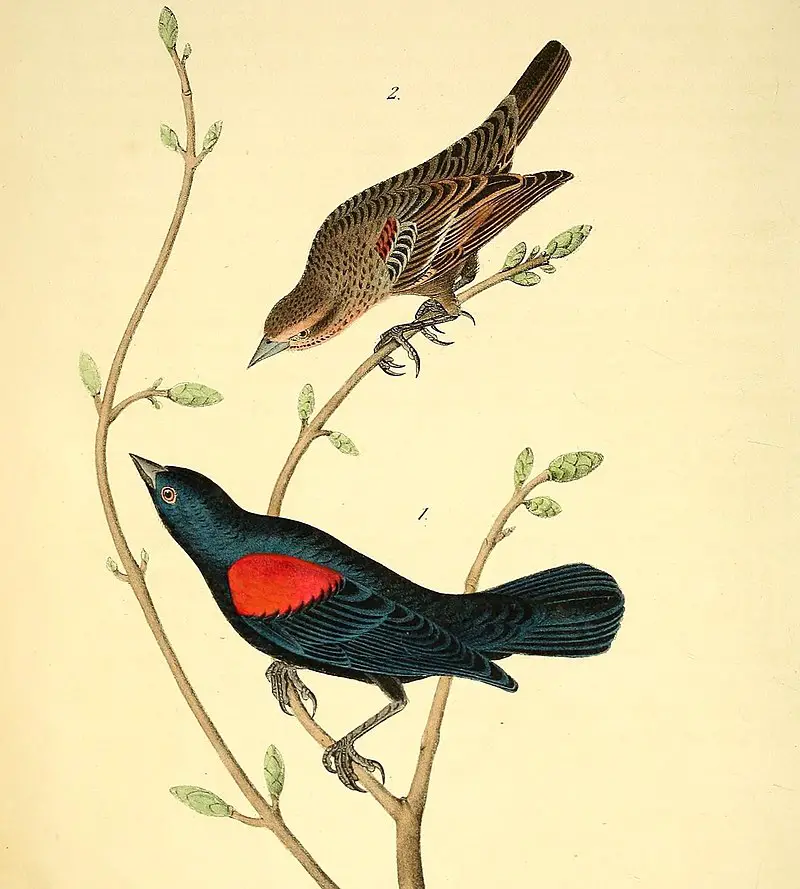
The red-shouldered blackbird is a species of bird that belongs to the family Icteridae. This species can only be found in Cuba and has been classified as Least Concern on the IUCN Red List due to its limited range.
It has an overall glossy dark brown plumage, with some reddish patches on its wings which are distinguishable when it flies or perches.
Its diet mainly consists of insects and seeds, being an important part of Cuban avian diversity.
Unfortunately, this unique specie faces threats like habitat loss from deforestation and hunting pressure from humans; therefore conservation efforts must take place if we want future generations to appreciate this beautiful creature.Scientific classification:
| Kingdom | Animalia |
| Phylum | Chordata |
| Class | Aves |
| Order | Passeriformes |
| Family | Icteridae |
| Genus | Agelaius |
| Species | A. assimilis |
23. Giant Kingbird
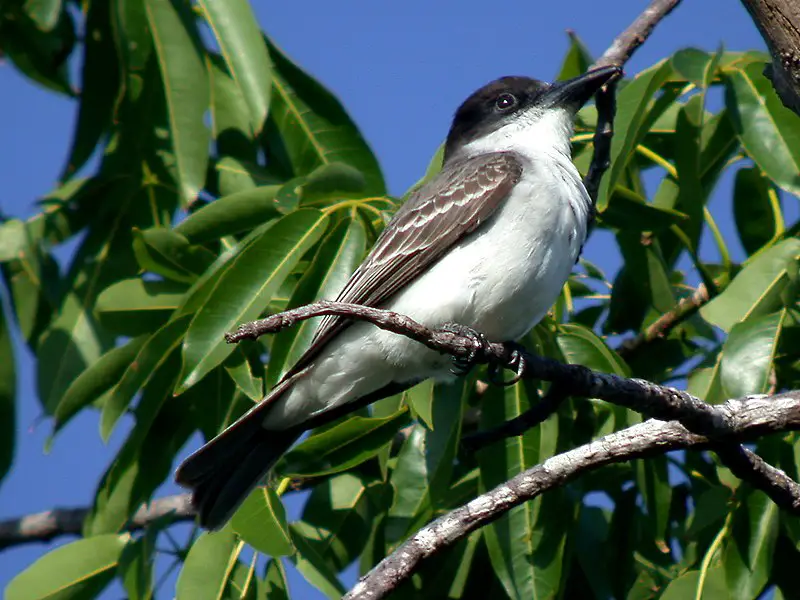
The Giant Kingbird (Tyrannus cubensis) is an impressive bird, endemic to Cuba. It belongs to the tyrant flycatcher family and is mainly related to the Loggerhead kingbird found in several Caribbean islands.
This species can reach up to 23 cm long, but recent studies have shown that this might be overly conservative estimate.
The Giant kingbirds are particularly noted for their feisty nature – they will often chase or even attack larger birds if provoked.
They also possess a distinctive call consisting of ‘kip-kirrr’ notes which gives them away easily in Cuban forests.
As such, these beautiful creatures need our protection so that future generations may continue appreciating them for years to come.Scientific classification:
| Kingdom | Animalia |
| Phylum | Chordata |
| Class | Aves |
| Order | Passeriformes |
| Family | Tyrannidae |
| Genus | Tyrannus |
| Species | T. cubensis |
24. Cuban Kite
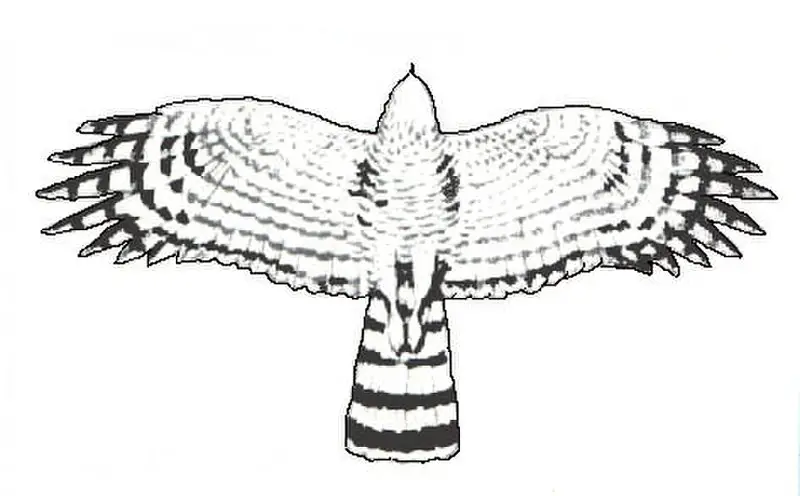
The Cuban Kite is a majestic bird of prey found only in Cuba. It belongs to the Accipitridae family, which includes kites, eagles and harriers.
Unfortunately this species has been classified as critically endangered due to its rapidly declining population size; it’s estimated that there are now between 50-249 mature birds remaining.
In the past 40 years they have become increasingly harder to spot, leading conservationists to believe their numbers will continue decreasing unless urgent action is taken.
Fortunately efforts are being made by organisations such as BirdLife International and IUCN who strive for better protection of these beautiful creatures before it’s too late.Scientific classification:
| Kingdom | Animalia |
| Phylum | Chordata |
| Class | Aves |
| Order | Accipitriformes |
| Family | Accipitridae |
| Genus | Chondrohierax |
| Species | C. wilsonii |
25. Ivory-Billed Woodpecker
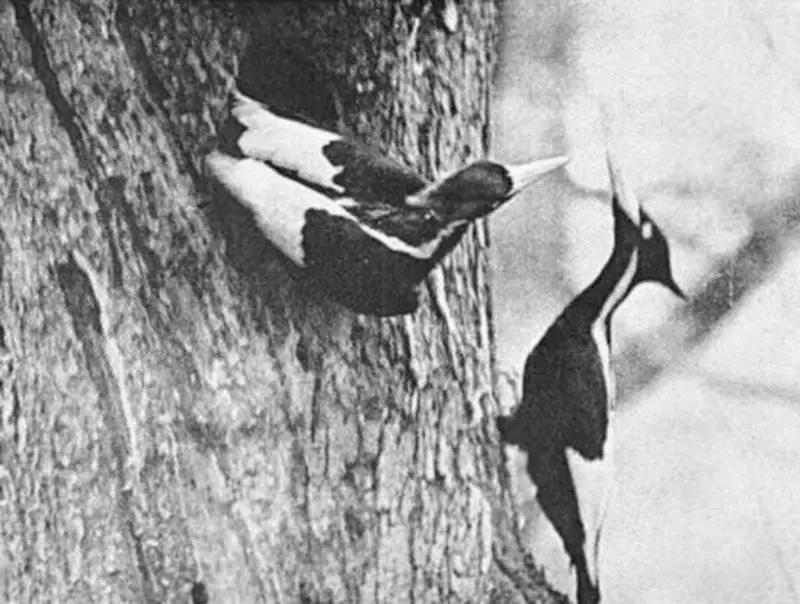
The Ivory-billed woodpecker is a beautiful bird native to the Southern United States and Cuba.
Sadly, due to habitat destruction and hunting, its numbers have greatly decreased so much that it has been classified as critically endangered by the International Union for Conservation of Nature (IUCN).
It typically lives in bottomland hardwood forests or temperate coniferous forests. This species is notable for having very large bills which are ivory colored on top with black underneath – hence their name.
They can be up to 20 inches long and weigh around 10 ounces when fully grown. These birds mainly feed on insects such as ants and beetles but will sometimes eat fruits too.
Despite our best efforts, this stunning species may soon vanish forever unless we take drastic action now.Scientific classification:
| Kingdom | Animalia |
| Phylum | Chordata |
| Class | Aves |
| Order | Piciformes |
| Family | Picidae |
| Genus | Campephilus |
| Species | C. principalis |
Also Featured In: Birds Live in Arkansas,
26. West Indian Woodpecker
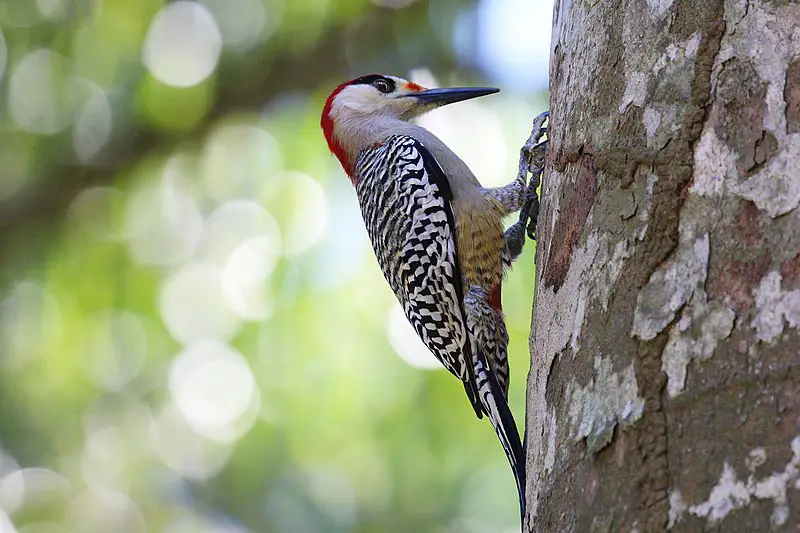
The West Indian woodpecker is a species of bird belonging to the family Picidae. It can be found in Cuba, the Bahamas and the Cayman Islands, living mainly in subtropical or tropical dry forest, lowland moist forests and mangrove habitats.
This species has been observed to exhibit polyandrous breeding behaviour – meaning that one female mates with multiple males at once – making it quite unique among its peers.
The diet of this bird consists mostly of insects which are gleaned from tree trunks by probing or drilling into them using their powerful bills; they will also feed on fruits when available.
Despite being listed as Least Concern by IUCN Red List due to its wide range and stable population, human activities such as deforestation have caused some decline in numbers for this species.Scientific classification:
| Kingdom | Animalia |
| Phylum | Chordata |
| Class | Aves |
| Order | Piciformes |
| Family | Picidae |
| Genus | Melanerpes |
| Species | M. superciliaris |
Also Featured In: Great Abaco Island Birds,
27. La Sagra’s Flycatcher

La Sagra’s flycatcher is a beautiful passerine bird that belongs to the tyrant flycatcher family. It can be found in subtropical or tropical moist lowland forests, mangrove forests and other tropical areas of Cuba, Bahamas, Grand Cayman and southern Florida (as an occasional vagrant).
This species has greyish-brown upperparts with yellowish rump; its wings are dark brown while underparts have buffy wash on throat and breast.
La Sagra’s flycatchers feed mainly on insects but they also eat some fruits sometimes. They often perch atop tall trees before making sallies into midair after catching prey in their bills.
These birds nest in large colonies where they build cup-shaped nests from twigs above ground level near water bodies like streams or rivers.
La Sagras’s Flycatchers are active during day time when they search for food both alone as well as in groups allowing them to easily spot predators which may threaten their young ones nesting nearby.Scientific classification:
| Kingdom | Animalia |
| Phylum | Chordata |
| Class | Aves |
| Order | Passeriformes |
| Family | Tyrannidae |
| Genus | Myiarchus |
| Species | M. sagrae |
Also Featured In: Grand Bahama Birds,
28. Cuban Pewee
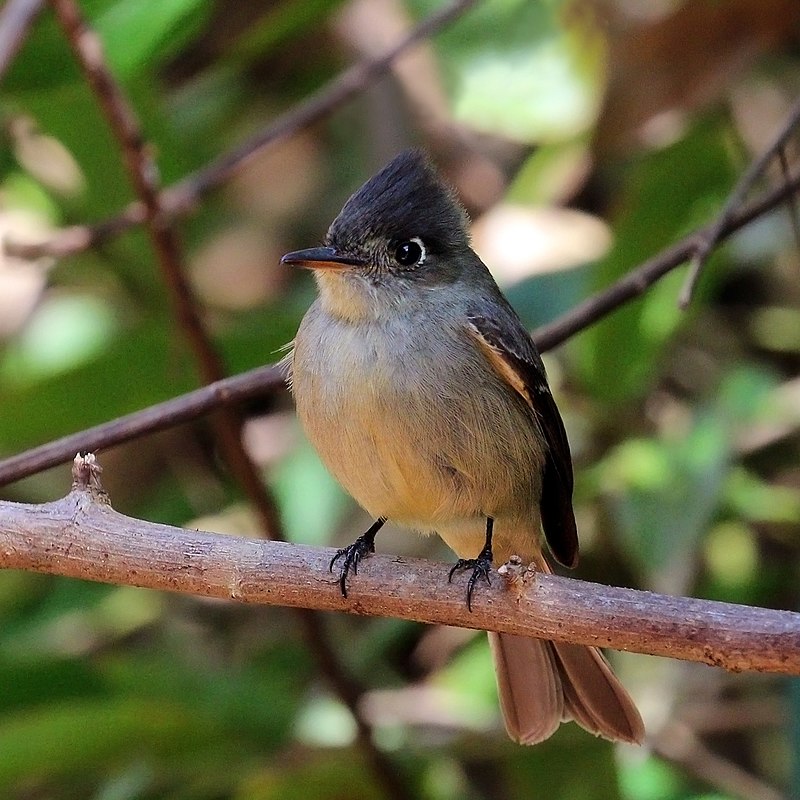
The Cuban Pewee is a species of bird belonging to the Tyrannidae family, found in Cuba and the northern Bahamas. It has a dark olive-grey upper body and dark grey underneath with white underwings.
Its head features an eye stripe that forms into a crescent shape near its beak.
Measuring 16 cm long, it can easily be identified by its distinct call heard during breeding season which includes whistles, chirps and rattling noises like marbles being shaken in a container.
The Cuban Pewee feeds on insects caught midair or gleaned from tree branches while perching.
During winter months they form mixed flocks with other birds where they search for food together such as fruit or nectar from flowers at forest edges or gardens – making them beneficial pollinators too.Scientific classification:
| Kingdom | Animalia |
| Phylum | Chordata |
| Class | Aves |
| Order | Passeriformes |
| Family | Tyrannidae |
| Genus | Contopus |
| Species | C. caribaeus |
29. Cuban Crow
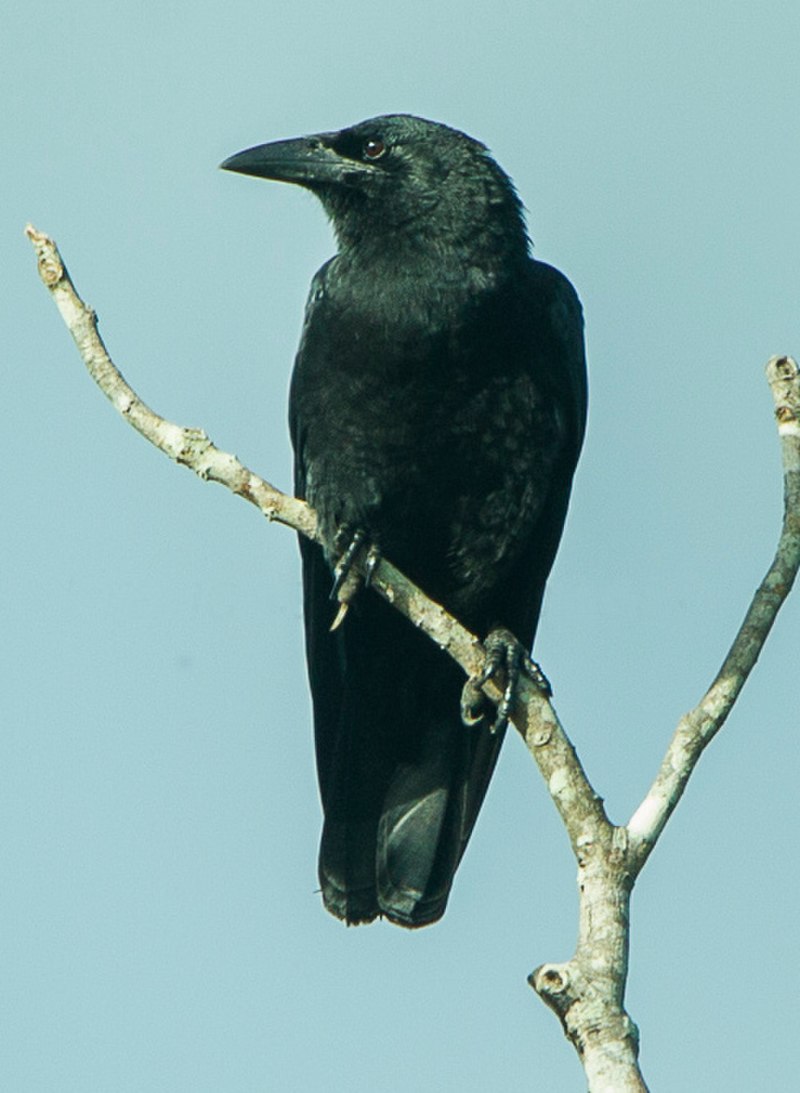
The Cuban crow is a beautiful and unique species of bird native to the Caribbean. It has black plumage, with white feathers on its neck, giving it an elegant look.
Its bill is hooked and tapered at the tip, while its legs are stout and grey in color. The Cuban crow feeds mainly on fruits from trees but will also feed on insects or carrion if necessary.
It often congregates in large flocks when searching for food sources, making them easy to spot among other birds of prey.
They have adapted well to human disturbance due their ability to quickly adapt behaviorally; this makes them tolerant of people near nesting sites as long as they remain undisturbed by noise or activity nearby.
Despite threats posed by habitat destruction caused by hurricanes and deforestation, these intelligent crows continue to thrive throughout Cuba’s countryside areas today.Scientific classification:
| Kingdom | Animalia |
| Phylum | Chordata |
| Class | Aves |
| Order | Passeriformes |
| Family | Corvidae |
| Genus | Corvus |
| Species | C. nasicus |
Also Featured In: Common Birds of Turks and Caicos Islands, Native Birds Of Middle Caicos
30. Gundlach’s Hawk
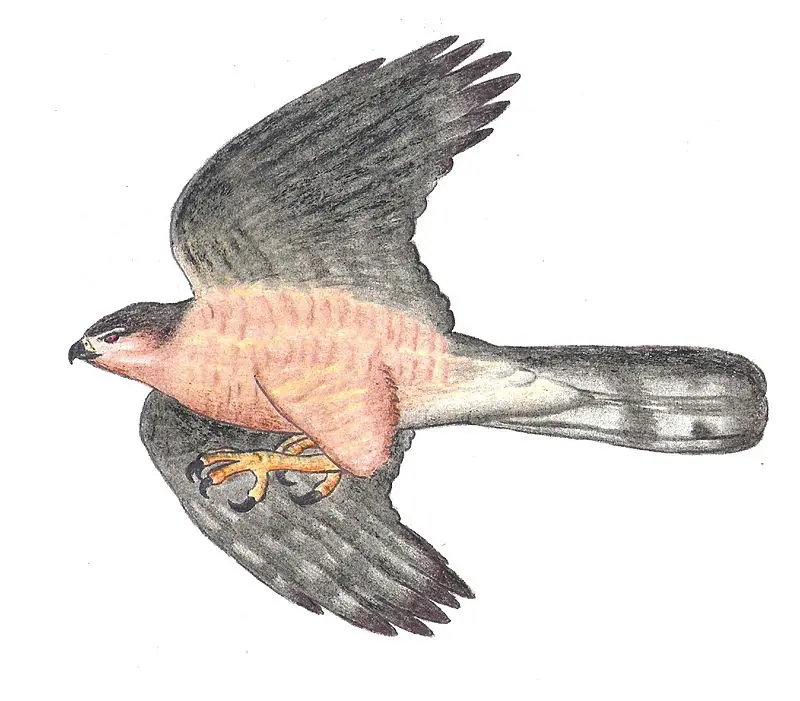
Gundlach’s hawk is a species of bird of prey endemic to Cuba. It was named after the German-Cuban ornithologist Juan Cristobal Christoff Gundlach and stands between 43–51 cm in height.
This medium-sized forest raptor has been threatened by both habitat loss and human persecution, making it an endangered species.
Its diet primarily consists of frogs, lizards, snakes, small mammals and birds as well as large insects like grasshoppers or mantids.
The best way to help conserve this unique species would be to protect its natural habitats from destruction due to deforestation or other means so that they can continue living safely within their native range without fear of human interference.Scientific classification:
| Kingdom | Animalia |
| Phylum | Chordata |
| Class | Aves |
| Order | Accipitriformes |
| Family | Accipitridae |
| Genus | Accipiter |
| Species | A. gundlachi |
31. Thick-Billed Vireo
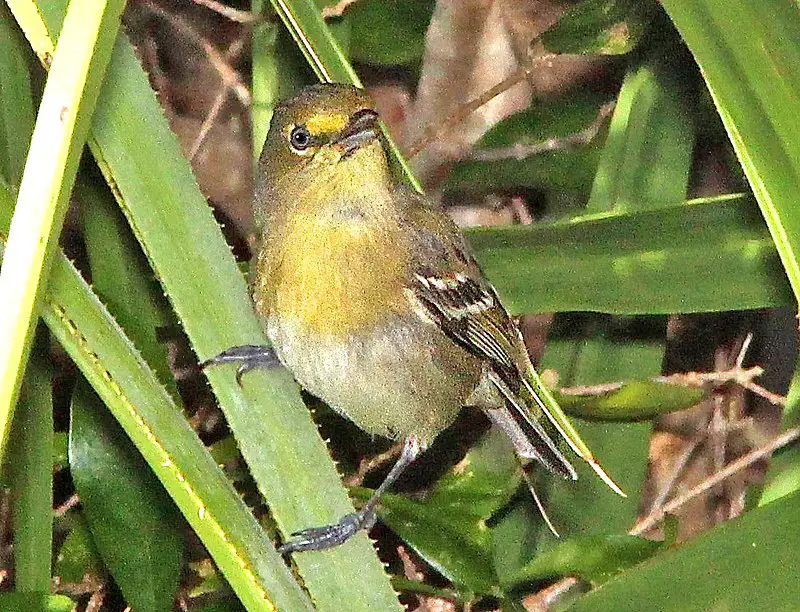
The Thick-billed Vireo is a small songbird native to the West Indies, found in places such as The Bahamas, Turks and Caicos Islands, Cayman Islands and on cays off Cuba.
Occasionally it has been spotted as far away as south Florida. It is classified into one species with two subspecies: Vireo crassirostris and V.c. approximans of Providencia Island which may be considered its own species by some authorities.
This bird prefers dry forests or mangrove swamps for nesting where there are plenty of trees available for habitat protection from predators like hawks or owls.
Its diet consists mainly of insects but also includes fruits when they’re in season.
In order to avoid competition with other birds during breeding times these vireos migrate northward each year between April and June returning again around October before winter sets in making them an interesting sight if you happen to spot one.Scientific classification:
| Kingdom | Animalia |
| Phylum | Chordata |
| Class | Aves |
| Order | Passeriformes |
| Family | Vireonidae |
| Genus | Vireo |
| Species | V. crassirostris |
32. Olive-Capped Warbler
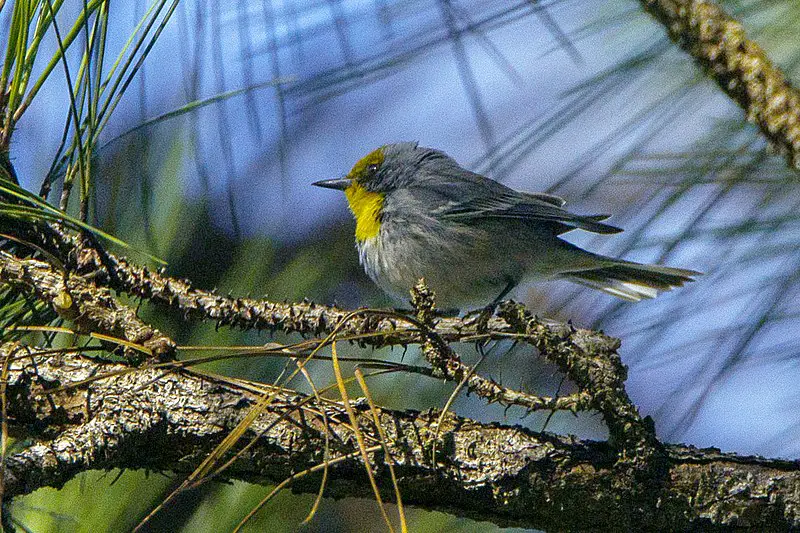
The Olive-capped Warbler is a species of New World warbler found in western and eastern Cuba, Grand Bahama and the Abaco Islands. It can typically be seen living amongst pine forests or near mixed woodlands.
This small bird has olive green feathers on its head that distinguishes it from other similar birds in its region. Its diet consists mainly of insects; however, they also feed off fruits such as those native to their natural habitats.
They are territorial birds who sing loudly during courtship displays in order to attract mates with whom they will form monogamous relationships for one breeding season at least.
The Olive-capped Warbler helps maintain balance within ecosystems by preying upon pests like moths, beetles and caterpillars which might otherwise cause damage to crops if left unchecked by predators like this avian species.Scientific classification:
| Kingdom | Animalia |
| Phylum | Chordata |
| Class | Aves |
| Order | Passeriformes |
| Family | Parulidae |
| Genus | Setophaga |
| Species | S. pityophila |
33. Cuban Macaw
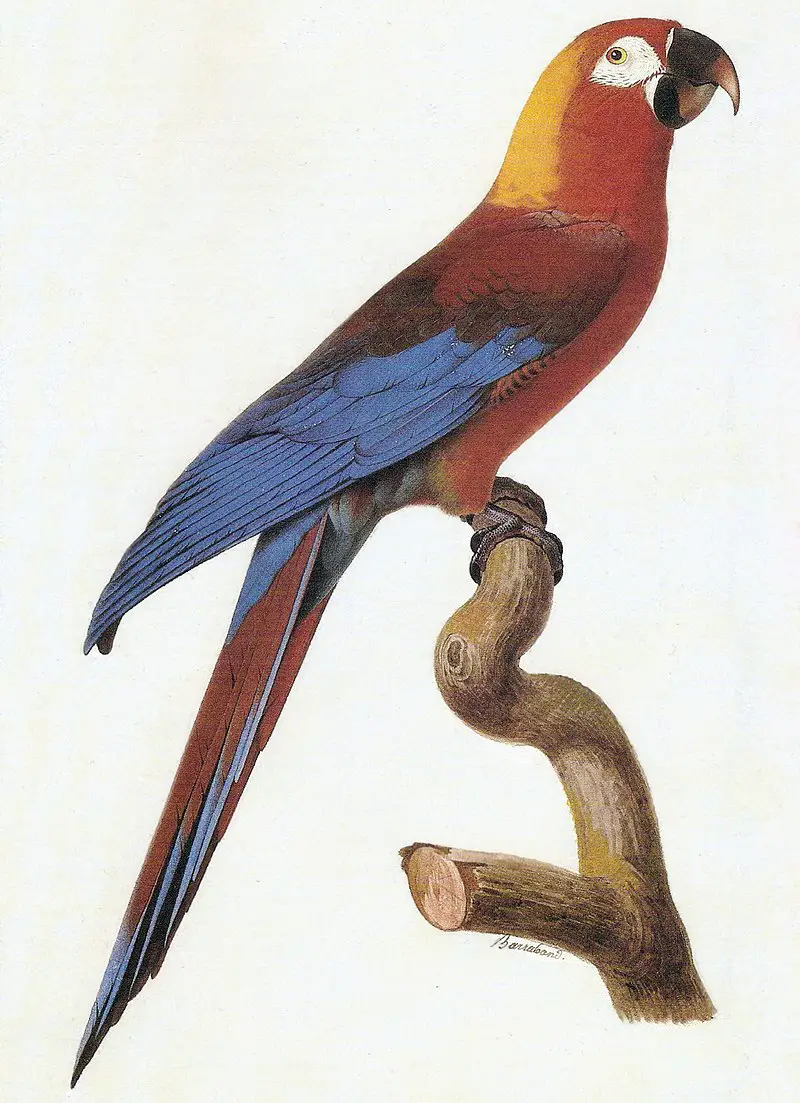
The Cuban macaw was a vibrant and beautiful bird found in Cuba. This species of macaw had brilliant scarlet feathers with blue wings, yellow shoulder patches, and black stripes on its tail.
It also had an impressive size of up to two feet long. Unfortunately, the Cuban macaw became extinct in the late 19th century due to hunting for their colorful feathers as well as habitat destruction.
The exact relationship between this species and other members of its genus is still unknown but it is thought that it was closely related to the Scarlet Macaws which share some similarities in appearance.
Even though these birds are no longer around today we can appreciate them through artwork or photographs taken before they went extinct.Scientific classification:
| Kingdom | Animalia |
| Phylum | Chordata |
| Class | Aves |
| Order | Psittaciformes |
| Family | Psittacidae |
| Genus | Ara |
| Species | †A. tricolor |
34. Cuban Nightjar
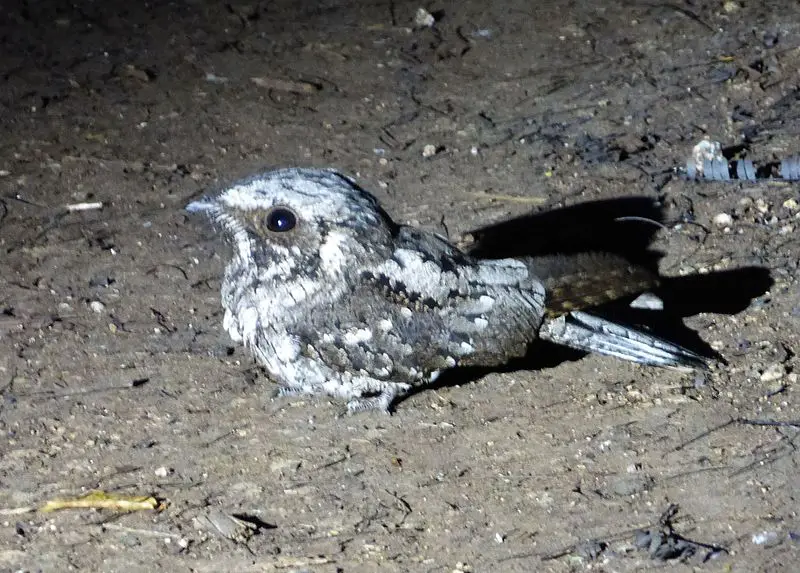
The Cuban Nightjar is an enigmatic species of nightjar that resides only in Cuba. It belongs to the Caprimulgidae family, also known as goatsuckers due to their diet primarily consisting of insects like moths and beetles.
These birds have complex plumage patterns with streaks and spots on a greyish-brown background; they have short tails with white tips at the end, giving them a distinctive look.
They are usually active during early mornings or late evenings when insect activity is high; males produce loud cooing calls during mating season which can be heard for several kilometres away.
The Cuban Nightjar may not be well-known but it’s certainly worth its attention – these fascinating creatures offer us insight into our Caribbean wildlife heritage.Scientific classification:
| Kingdom | Animalia |
| Phylum | Chordata |
| Class | Aves |
| Order | Caprimulgiformes |
| Family | Caprimulgidae |
| Genus | Antrostomus |
| Species | A. cubanensis |
35. Northern Flicker

Fernandina’s Flicker (Colaptes fernandinae) is a species of woodpecker indigenous to the Galapagos Islands. It has an orange-brown back, reddish head and wings with a yellow breast.
This bird can also be identified by its long tail feathers which are twice as long as other similar birds in the region.
They feed on insects such as ants, beetles and caterpillars that live under tree bark or inside decaying logs; they also eat fruit from cacti and shrubs found near their nesting sites.
The Fernandina’s flicker nests in hollow trees or cavities made by other birds like parrots, making them vulnerable to predation from introduced predators like cats and rats.
To survive this danger these birds have adapted their behaviour so that they move around during daylight hours instead of at night when it’s safer for them to do so.
36. Eastern Meadowlark
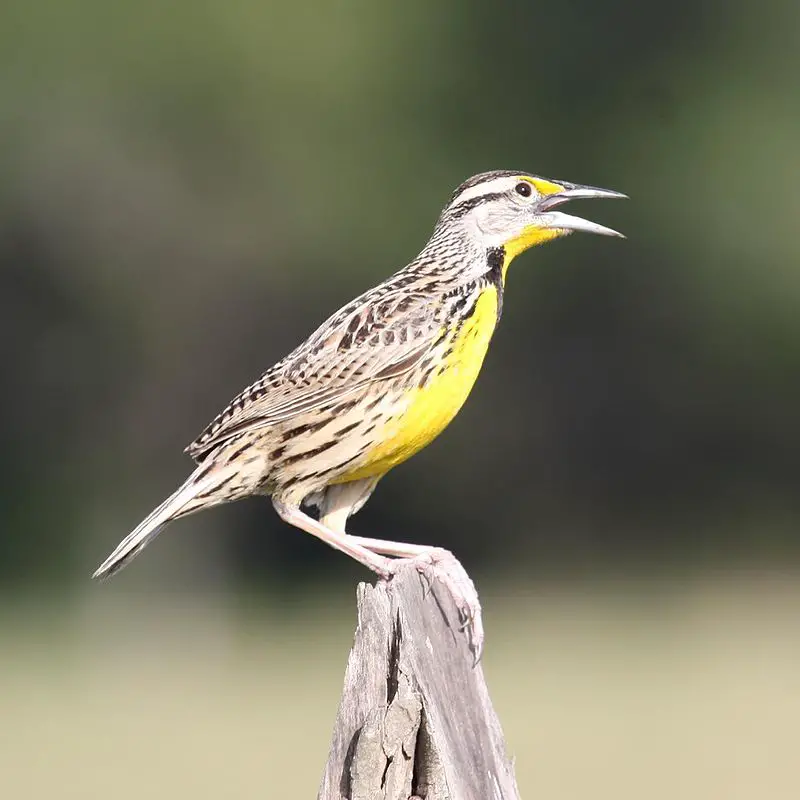
The Eastern meadowlark is a medium-sized blackbird, found from eastern North America to northern South America.
It used to be considered the same species as the Western meadowlark but has since been separated into its own distinct species.
The bird is mainly brown with yellow underparts and an orange patch on its throat; it also has white wing bars which can be seen in flight.
Its song consists of a series of musical whistles followed by gurgling notes at the end, earning them their nickname “rainmaker” birds because they are believed to bring rain if heard singing during dry weather.
These beautiful birds feed mostly on insects, seeds and other plant material while nesting amongst grasses or low shrubs near open fields where there’s plenty of food available for them.Scientific classification:
| Kingdom | Animalia |
| Phylum | Chordata |
| Class | Aves |
| Order | Passeriformes |
| Family | Icteridae |
| Genus | Sturnella |
| Species | S. magna |
Also Featured In: Birds You’ll Find in South Texas , Birds that Live in the Grasslands
37. Western Spindalis
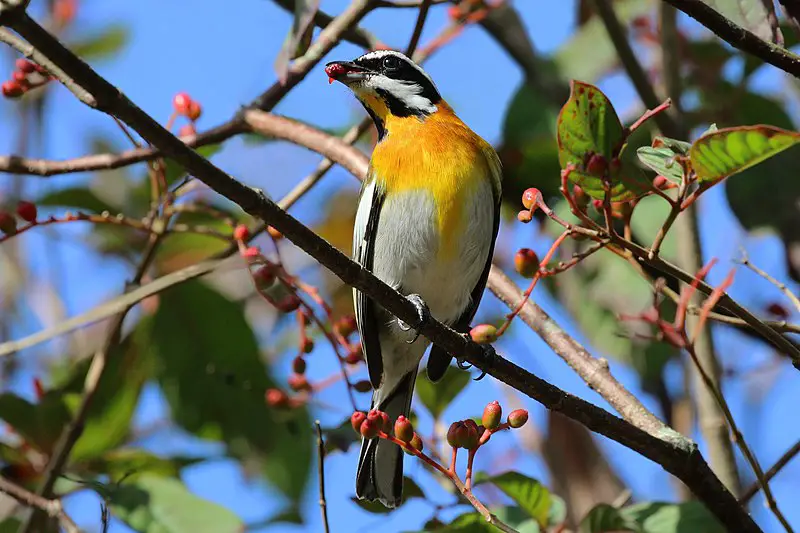
The Western Spindalis is a unique and fascinating species of songbird. It was formerly classified as a stripe-headed tanager, but it has since been reclassified as incertae sedis – that is, its exact place in the avian family tree cannot be determined.
This bird stands out from other birds due to its colorful plumage; males have yellow heads with black streaks across their faces while females are olive green all over with white stripes on the wings and back.
They inhabit tropical forests throughout much of Central America where they feed mainly on fruits and insects.
These birds are agile fliers who often flock together in small groups or pairs when searching for food sources such as mangoes, papayas, figs or even nectar from flowers.
The Western Spindalis makes an interesting addition to any backyard aviary.Scientific classification:
| Kingdom | Animalia |
| Phylum | Chordata |
| Class | Aves |
| Order | Passeriformes |
| Family | Spindalidae |
| Genus | Spindalis |
| Species | S. zena |
Also Featured In: Cozumel Birds You Didn’t Know,
38. American Flamingo
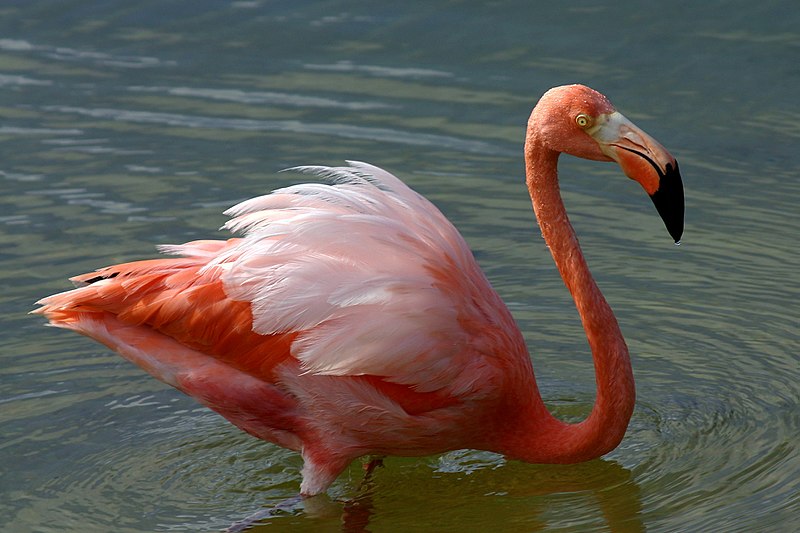
The American flamingo is a large species of bird found in the Neotropics. It has bright pink feathers and long legs, making it easily distinguishable from other species of flamingos.
The diet consists mostly of shrimp and small fish but they are also known to eat algae, aquatic insects, mollusks, crustaceans and seeds.
They live around coastal lagoons or salt ponds in colonies with thousands of birds nesting together on mud flats.
Flamingos build nests out of sticks that sit atop their feet as they wade through shallow waters looking for food during low tide periods when these areas become more accessible for feeding purposes.
These birds have an interesting courtship ritual involving neck stretching which looks like a dance to attract mates before breeding season begins in May-June each year leading to chicks hatching during July-August time periodScientific classification:
| Kingdom | Animalia |
| Phylum | Chordata |
| Class | Aves |
| Order | Phoenicopteriformes |
| Family | Phoenicopteridae |
| Genus | Phoenicopterus |
| Species | P. ruber |
39. Hook-Billed Kite
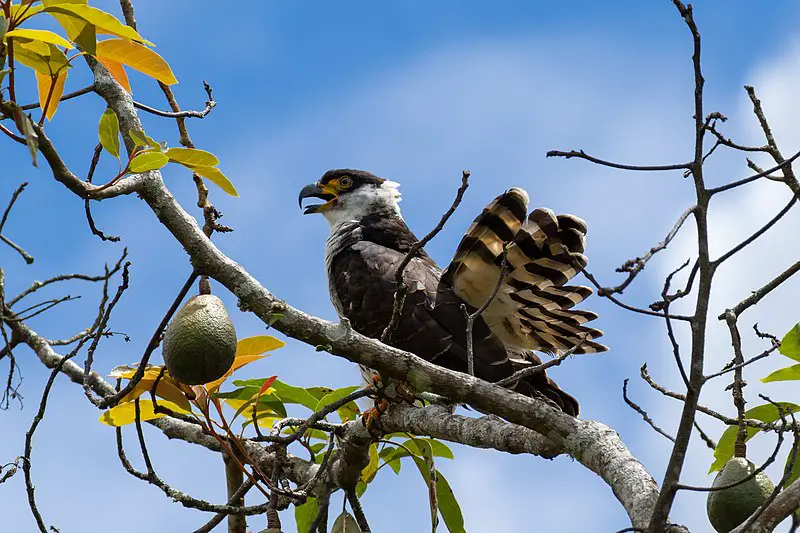
The Hook-billed Kite is a mid-sized raptor native to the Americas. It has an unmistakable striped beak and slender body, which make it easily recognizable as a member of the Accipitridae family.
This species can be found in many places from Texas in the United States all throughout Central America and tropical South America. They are also very common in Mexico, especially around the Rio Grande Valley area.
The Hook-billed Kite feeds on small reptiles such as lizards or snakes along with other insects like dragonflies or grasshoppers that they spot while soaring through their habitats near wetlands and riversides throughout its range.
Its bright colors help them blend into their surroundings making them difficult for predators to spot them when perched up high among tree branches looking out for prey below.Scientific classification:
| Kingdom | Animalia |
| Phylum | Chordata |
| Class | Aves |
| Order | Accipitriformes |
| Family | Accipitridae |
| Genus | Chondrohierax |
| Species | C. uncinatus |
Also Featured In: Birds You’ll Find in the Rio Grande Valley,
40. Palm Crow
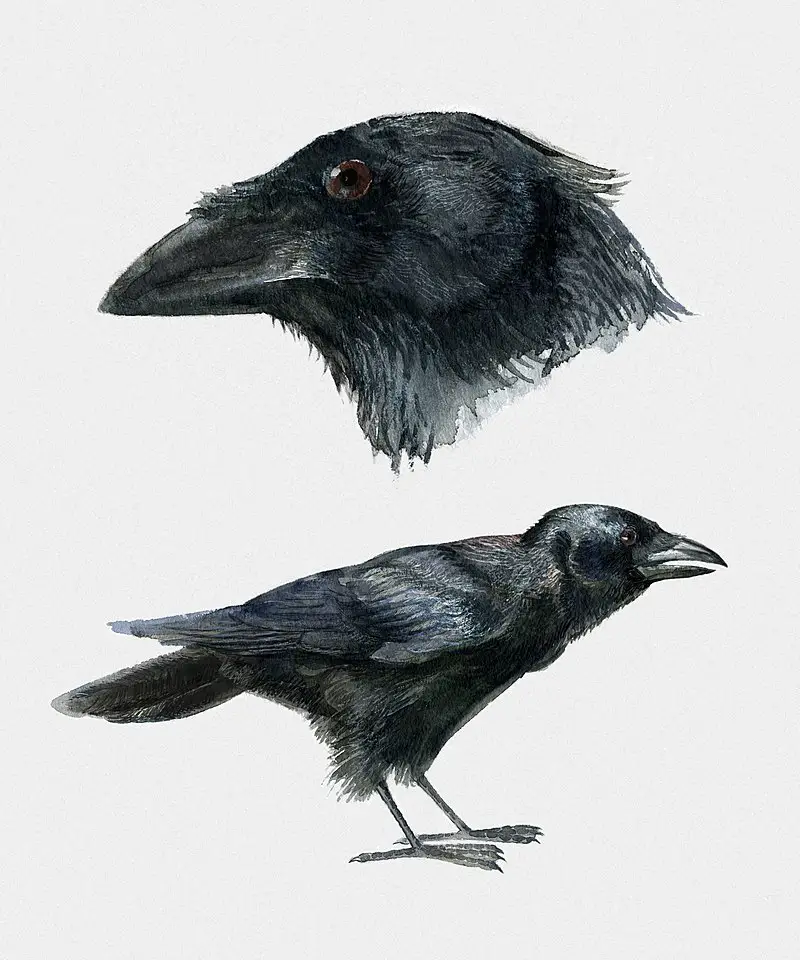
The Palm Crow is a small corvid native to the Caribbean islands of Hispaniola and Cuba. It has two subspecies; one found on each island, with the Cuban variety being slightly smaller in size.
While it used to be very common across both islands, its population has been significantly reduced in recent times.
The Palm crow is known for its distinctive black plumage, which contrasts sharply against its white belly feathers – giving them an almost two-tone appearance when viewed from certain angles.
This species also boasts long legs that are well suited for picking through dense vegetation or wading into shallow water looking for food sources like insects and other invertebrates as well as some fruits and seeds.
Its loud call can often be heard echoing throughout their range making this bird quite easy to identify even if you don’t get a chance to see it up close.Scientific classification:
| Kingdom | Animalia |
| Phylum | Chordata |
| Class | Aves |
| Order | Passeriformes |
| Family | Corvidae |
| Genus | Corvus |
| Species | C. palmarum |
41. Pine Warbler
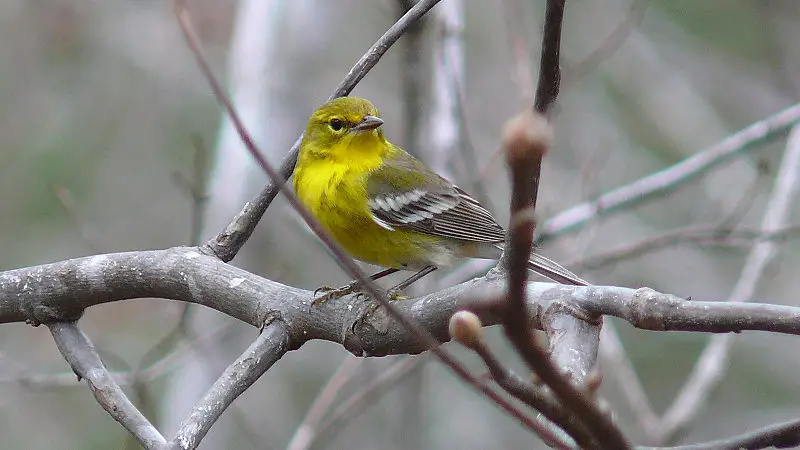
The Pine Warbler is a small bird from the New World warbler family, with an olive-brown upperparts and white belly.
Its distinguishing features include two white wing bars, dark legs, thin pointed bills and yellowish ‘spectacles’ around its eyes.
Adult males have bright yellow throats and breasts on top of their olive upperparts; females and immatures are less vibrant in colour but retain similar characteristics.
These birds can be found near pine forests throughout North America during summer months before migrating to warmer climates for winter.
They feed mainly on insects such as caterpillars, spiders and flies while also consuming fruits like blueberries when food becomes scarce in colder times of year.
All in all, these tiny songbirds provide us with much beauty through their unique plumage patterns whilst serving important roles within their ecosystems.Scientific classification:
| Kingdom | Animalia |
| Phylum | Chordata |
| Class | Aves |
| Order | Passeriformes |
| Family | Parulidae |
| Genus | Setophaga |
| Species | S. pinus |
Also Featured In: Most Common Songs Birds that Live around You, New Hampshire Birds You Should Know
42. Red-Legged Thrush
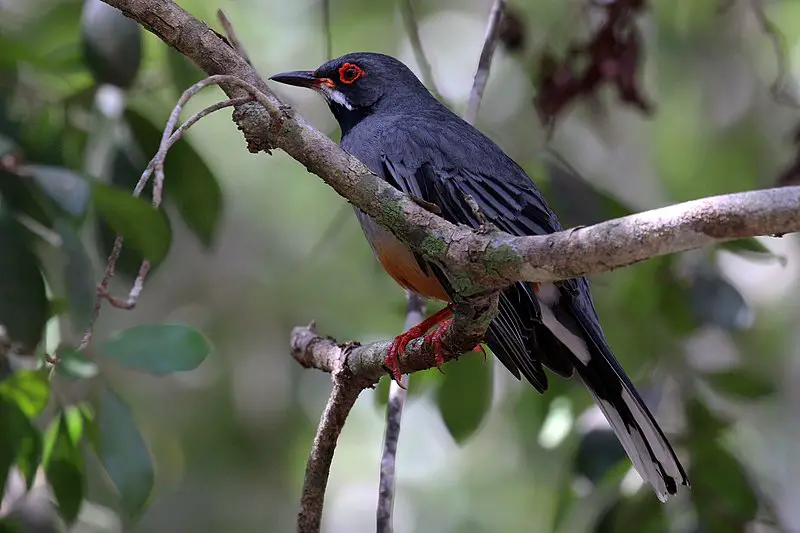
The Red-legged Thrush is a species of bird belonging to the Turdidae family, native to the Caribbean.
It can be found in places such as Bahamas, Cayman Islands and Puerto Rico where it goes by the name ‘Zorzal de patas coloradas’.
Unfortunately, this beautiful creature has been extirpated from Swan Island, Honduras. Its natural habitats are subtropical or tropical moist lowland forests and heavily degraded former forest areas.
This small thrush measures up to 22 cm in length with blackish upperparts while its underparts have reddish tinge on them which gives it an attractive appearance.
They mainly feed on fruits but also hunt for insects occasionally making it omnivorous in nature.Scientific classification:
| Kingdom | Animalia |
| Phylum | Chordata |
| Class | Aves |
| Order | Passeriformes |
| Family | Turdidae |
| Genus | Turdus |
| Species | T. plumbeus |
43. West Indian Whistling Duck
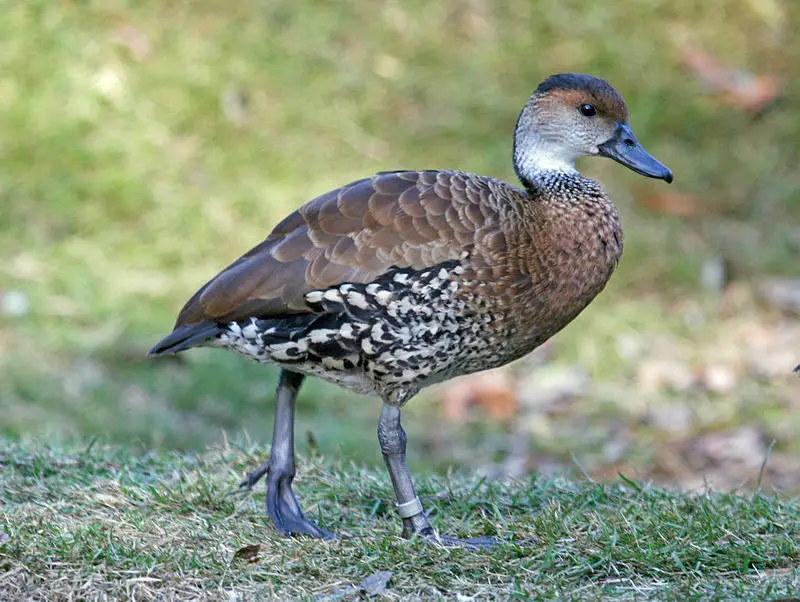
The West Indian whistling duck is a beautiful species of bird native to the Caribbean. This duck has an unmistakable call, as its name implies it can whistle.
It also has black bill and legs with grey-brown feathers that help camouflage it in its environment.
The primary breeding range of this species includes the Bahamas, Cuba, Cayman Islands, Antigua and Barbuda Jamaica, Hispaniola and Puerto Rico where they live mainly in shallow freshwater wetlands such as ponds or swamps.
Besides their distinctive whistles these birds are able to communicate through various other calls including grunts , honks and quacks.
They feed on aquatic plants but may occasionally eat small invertebrates like insects too.
Despite being hunted for food by humans these ducks still remain widespread throughout their habitats due to successful conservation efforts put into place over recent years making them a symbol of hope for many wildlife enthusiasts around the world today.Scientific classification:
| Kingdom | Animalia |
| Phylum | Chordata |
| Class | Aves |
| Order | Anseriformes |
| Family | Anatidae |
| Genus | Dendrocygna |
| Species | D. arborea |
Also Featured In: British Virgin Islands Birds You Need to See, Birds That You’ll Find in Hispaniola
44. Bachman’s Warbler
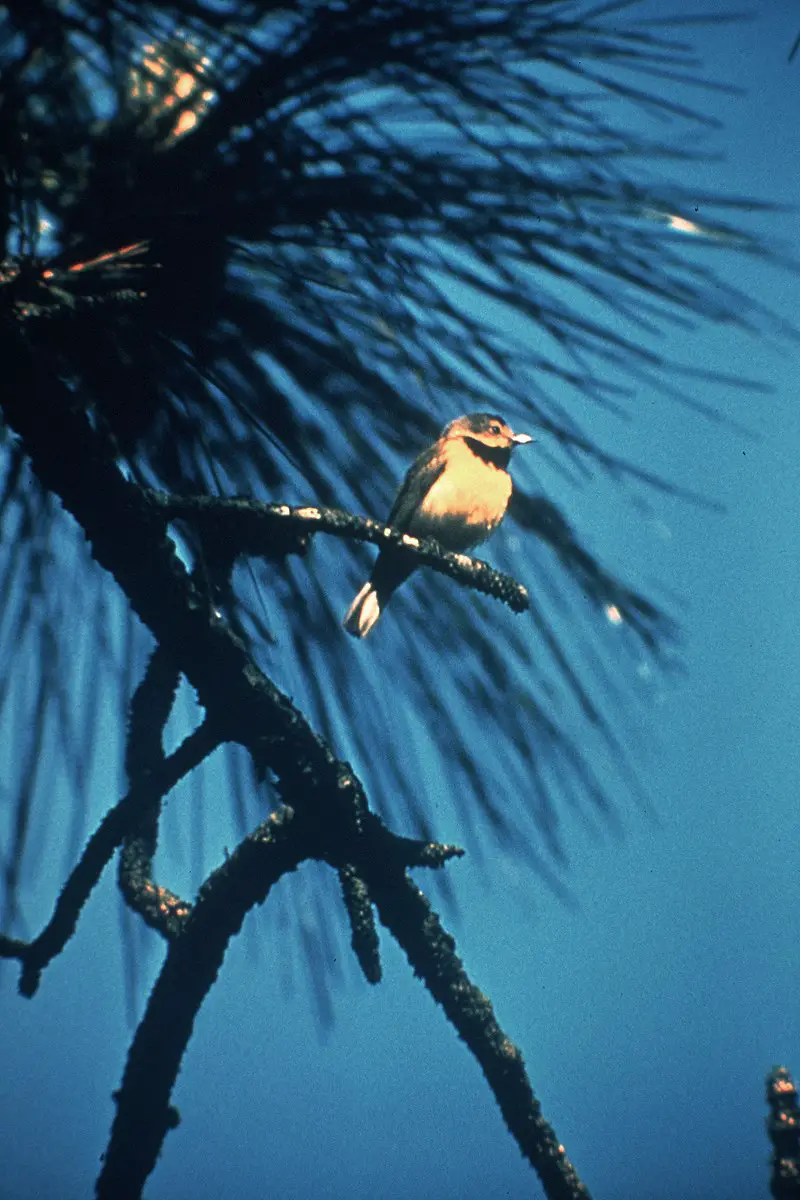
Bachman’s warbler is a migratory bird believed to be extinct. It bred in swampy areas of the US, such as blackberry and cane thickets, then flew south to Cuba for winter.
Despite reports from the 21st century, none have been accepted by authorities. The last confirmed sighting was in Louisiana in 1988. This elusive species had yellow plumage with a black crown and bill.
Its song was described as “a sweet trill” but sadly it has not been heard since 1975 when its population became too low for reproduction or sustainability due to habitat loss and other factors like weather conditions and competition from other birds.
Although conservation efforts are still ongoing there is little hope that this beautiful creature will ever again grace our skies.Scientific classification:
| Kingdom | Animalia |
| Phylum | Chordata |
| Class | Aves |
| Order | Passeriformes |
| Family | Parulidae |
| Genus | Vermivora |
| Species | †V. bachmanii |
45. Black-Throated Blue Warbler
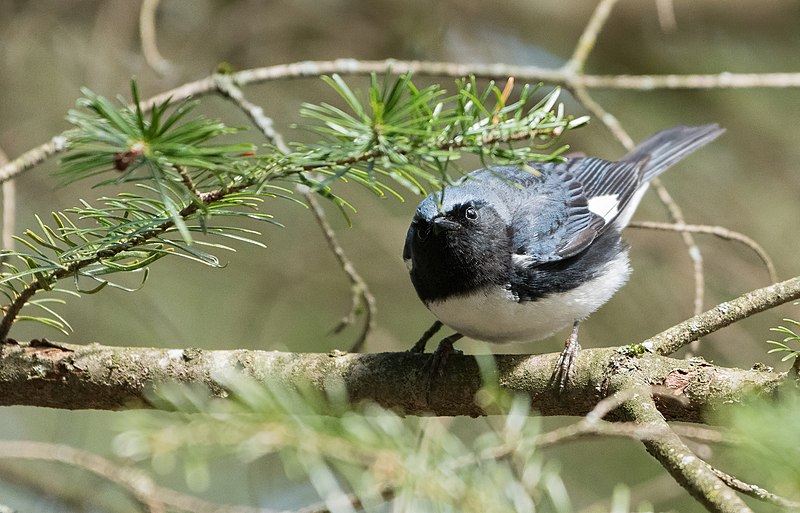
The black-throated blue warbler is a beautiful bird from the New World Warbler family. It breeds in deciduous and mixed coniferous forests of eastern North America, migrating to islands in the Caribbean and Central America during winter months.
This small passerine has an impressive plumage with bright blue upperparts and white underparts that contrast sharply against its coal-black throat patch.
Its wings are dark greyish or olive green with two bold white wing bars on each side; while its tail feathers are yellowish or whitish underneath but gray above.
These birds feed mainly on insects such as moths, beetles, ants, grasshoppers and spiders which they catch by flycatching from low branches or shrubs within their habitat range.
Rarely found in western Europe, it is considered to be non-indigenous there although some individuals have been observed over short periods of time.Scientific classification:
| Kingdom | Animalia |
| Phylum | Chordata |
| Class | Aves |
| Order | Passeriformes |
| Family | Parulidae |
| Genus | Setophaga |
| Species | S. caerulescens |
Also Featured In: Blue Birds You’ll Found around Us, Birds of Nova Scotia
46. Cuban Martin
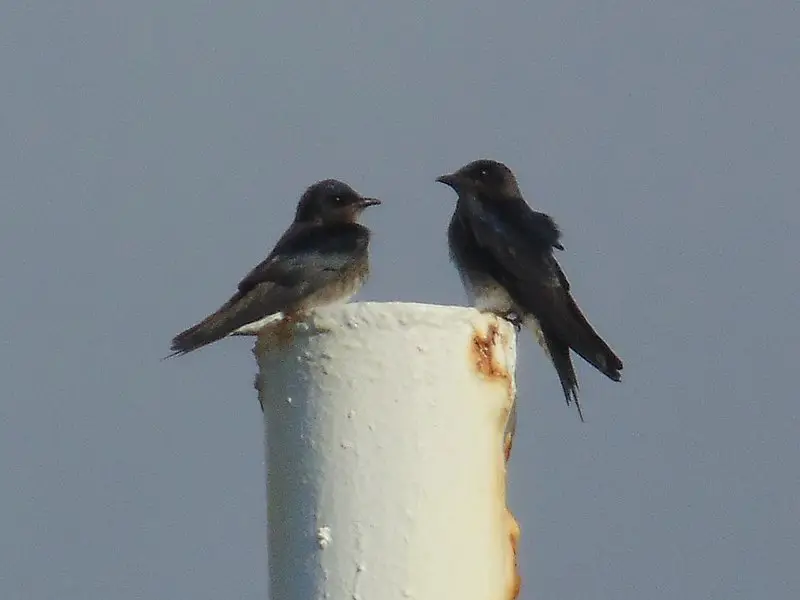
The Cuban martin is a species of swallow found only in Cuba. It belongs to the Progne genus, and has been thought at times to be a race of purple martin (Progne subis).
These birds measure 18.5 cm in length, are mainly dark grey with white markings on their wings and tail feathers – an adaptation which helps them blend into their environment while hunting for food.
They feed on insects such as flies and beetles, caught while they fly through the air or gleaned from foliage around trees or riversides.
The Caribbean Martin (P dominicensis) is closely related; it breeds across the Caribbean islands from Jamaica eastwards to Tobago whilst Sinaloa Martin (P sinaloae) inhabits Mexico too.Scientific classification:
| Kingdom | Animalia |
| Phylum | Chordata |
| Class | Aves |
| Order | Passeriformes |
| Family | Hirundinidae |
| Genus | Progne |
| Species | P. cryptoleuca |
47. Plain Pigeon
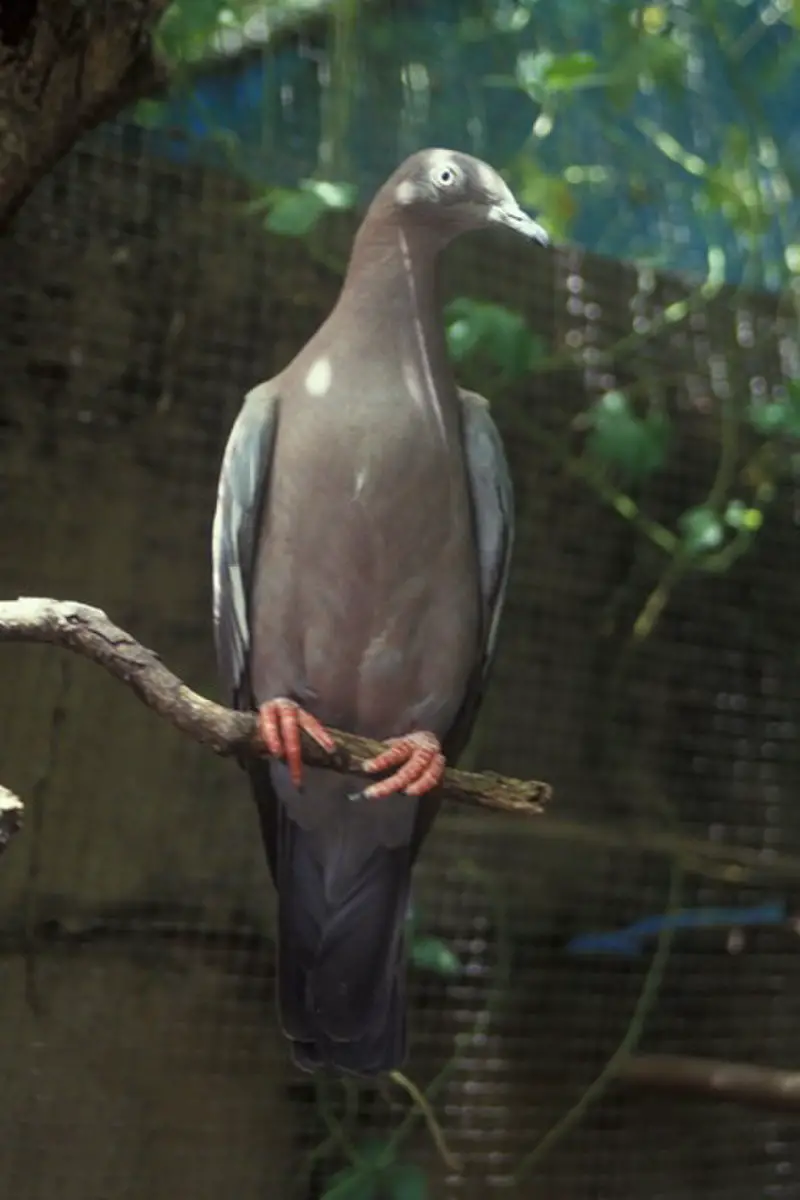
The Plain Pigeon is a species of bird belonging to the Columbidae family. It is mainly found in four Greater Antilles, such as Cuba, Hispaniola (Dominican Republic and Haiti), Jamaica and Puerto Rico.
This large-bodied bird has an average length of 38 cm with brownish gray plumage on its wings and back, while its neck feathered white or yellowish-gray coloration.
Its natural habitats are forest, woodland, coastal desert mangrove swamps which unfortunately it’s facing destruction due to habitat loss & illegal hunting activities by humans.
To save this species from extinction more strict law should be imposed for conservation along with creating awareness among people regarding importance of conserving these birds otherwise may lead them towards complete extinction soon.Scientific classification:
| Kingdom | Animalia |
| Phylum | Chordata |
| Class | Aves |
| Order | Columbiformes |
| Family | Columbidae |
| Genus | Patagioenas |
| Species | P. inornata |
48. Key West Quail-Dove
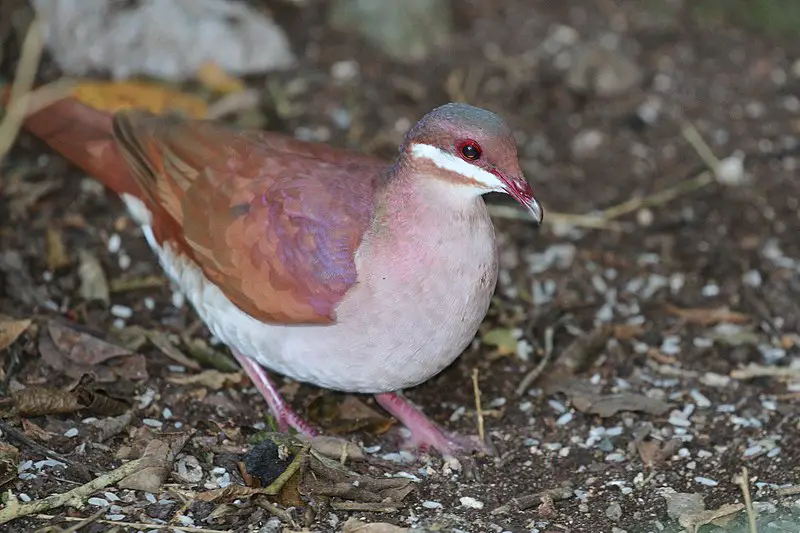
The Key West quail-dove is a species of bird from the Columbidae family, and is closely related to the bridled quail-dove. It breeds in The Bahamas and throughout most of Greater Antilles, except for Jamaica.
Interestingly enough, despite its name it does not currently breed in Florida Keys or Southern mainland Florida.
This dove has a light brown back with white underparts that are streaked on their sides and throat; they also have a distinctive black collar around their neck which makes them easily recognizable along with their red eyes.
These birds tend to live alone or in small flocks near open fields where food (seeds) can be found.
Unfortunately this species’ range seems to be getting smaller due to human activities such as deforestation but there are some conservation efforts being done like creating protected areas within these regions so we hope one day people will get to enjoy watching these beautiful creatures again.Scientific classification:
| Kingdom | Animalia |
| Phylum | Chordata |
| Class | Aves |
| Order | Columbiformes |
| Family | Columbidae |
| Genus | Geotrygon |
| Species | G. chrysia |
49. Bahama Mockingbird
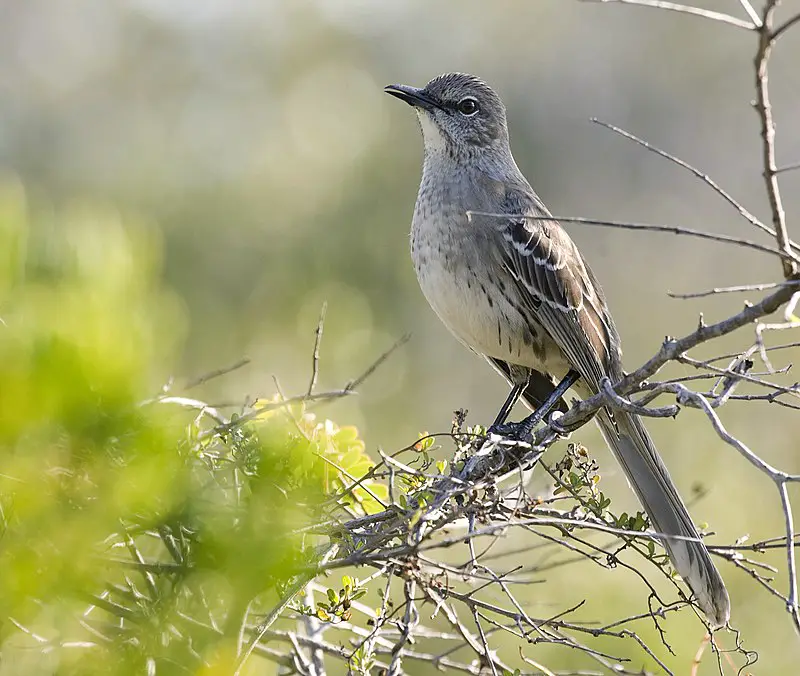
The Bahama Mockingbird is a species of bird found in the Bahamas, Cuba, Jamaica and the Turks and Caicos Islands. It is also known to be a vagrant to Florida.
This medium-sized greyish brown bird has two subspecies – Mimus gundlachii gundlachii (the nominate) and M. g hillii. The specific epithet ‘gundlachii’ honors Juan Gundlach who first described this species in 1841 on his expedition to Cuba.
On an average it measures 28 cm long with a wingspan of 39 cm when fully grown up; however males are larger than their female counterparts by about 10%.
They have gray upperparts along with white underparts which contain spots running down its sides as well as across its breast area for camouflaging themselves against predators like cats or foxes that may prey upon them during nesting season or otherwise.
These birds primarily feed on insects alongside fruits & berries occasionally too making them omnivorous creatures.Scientific classification:
| Kingdom | Animalia |
| Phylum | Chordata |
| Class | Aves |
| Order | Passeriformes |
| Family | Mimidae |
| Genus | Mimus |
| Species | M. gundlachii |
50. Loggerhead Kingbird
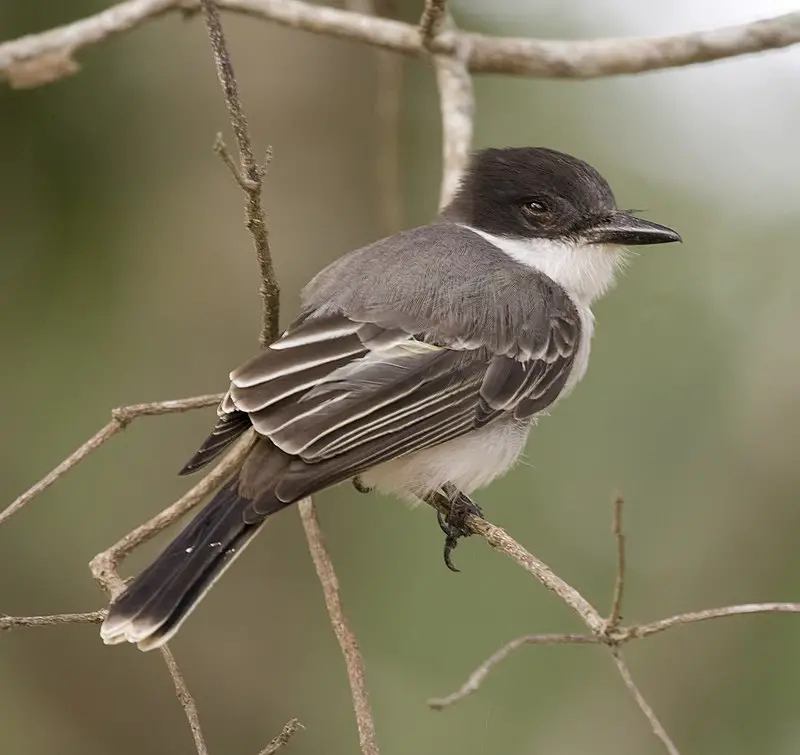
The Loggerhead Kingbird is a beautiful species of bird found in the West Indies, Bahamas, Cayman Islands, Cuba and Hispaniola. It prefers to inhabit subtropical or tropical moist lowland forests as well as montane forest habitats.
The kingbird has striking plumage with greyish-blue upperparts and bright yellow underparts. Its long tail feathers are darkly tipped which helps it stand out from other birds in its range.
This species feeds on insects such as beetles, grasshoppers and dragonflies that can be caught mid-air during its aerial forays.
Nesting season begins between February to May where they typically build their nests near riverside trees or shrubs and lay two eggs at once before incubating them for about 13 days till hatching occurs.
Although not yet threatened by extinction this shy creature should still be appreciated by all nature lovers who get lucky enough to observe one.Scientific classification:
| Kingdom | Animalia |
| Phylum | Chordata |
| Class | Aves |
| Order | Passeriformes |
| Family | Tyrannidae |
| Genus | Tyrannus |
| Species | T. caudifasciatus |
51. Sandhill Crane
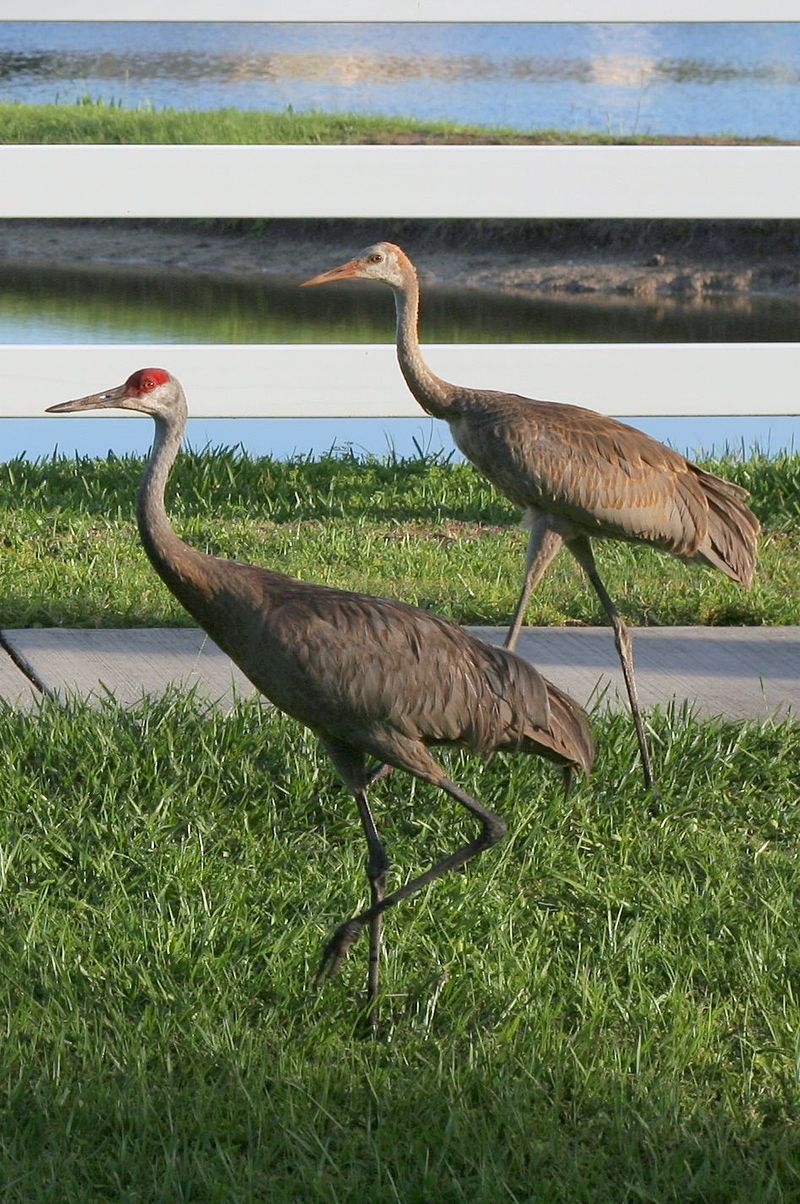
Sandhill Cranes are a large species of crane native to North America and northeastern Siberia. They are known for their distinctive calls, long legs, and long necks.
These birds typically inhabit wetland areas like the Platte River in Nebraska’s Sandhills on the Great Plains.
In Central Florida, they often gather at the edges of bodies of water such as lakes or rivers.
During breeding season, sandhill cranes can be seen performing elaborate courtship dances that involve bowing and jumping in unison with their partner.
Their diet consists mainly of plant material including grains, roots, tubers and aquatic plants which they obtain by pecking or digging into mudflats using their bill or feet respectively.
With an average lifespan between 10-20 years these majestic creatures make great additions to any wetland habitat.Scientific classification:
| Kingdom | Animalia |
| Phylum | Chordata |
| Class | Aves |
| Order | Gruiformes |
| Family | Gruidae |
| Genus | Antigone |
| Species | A. canadensis |
Also Featured In: Flocks Birds around Us, Summer Birds that Live around Us